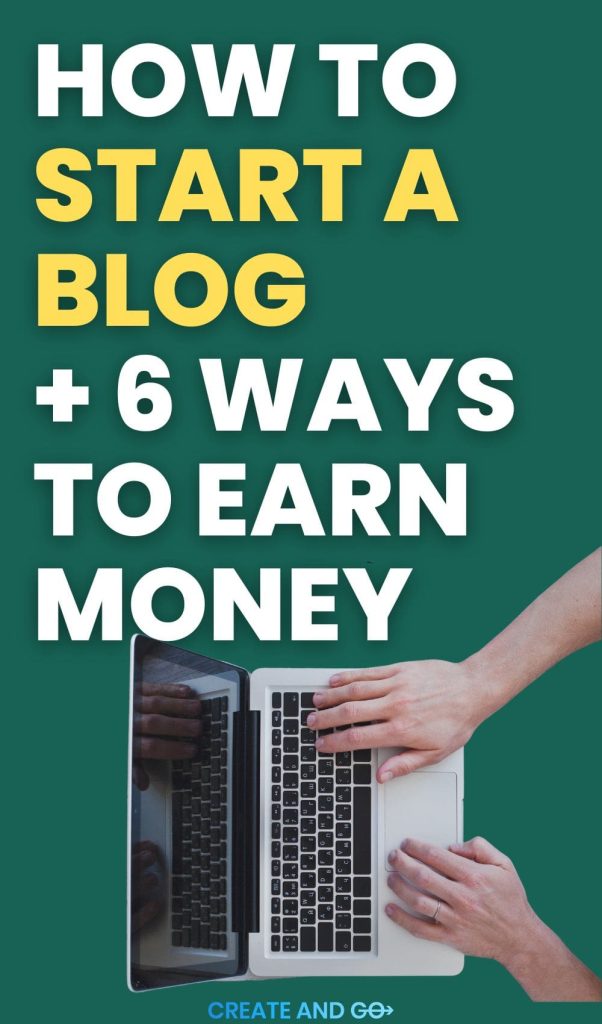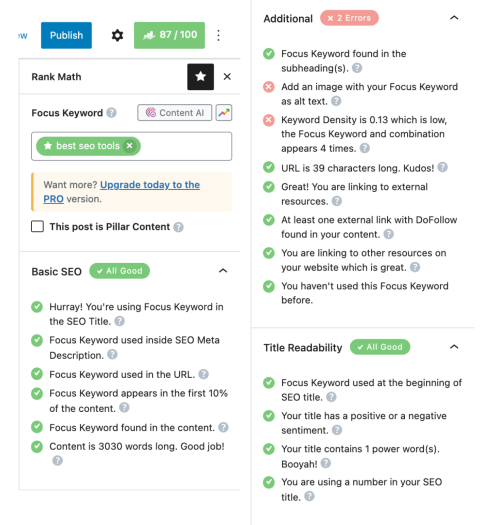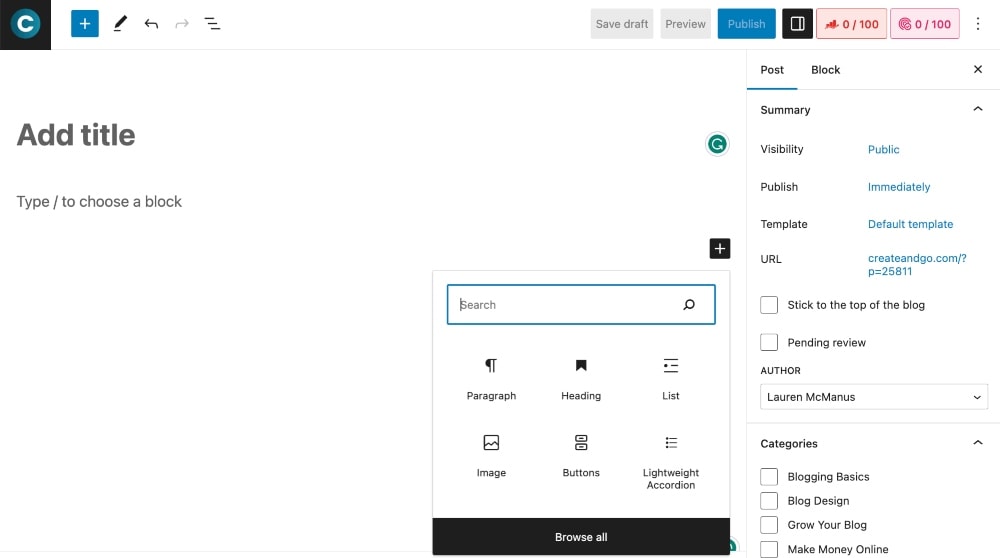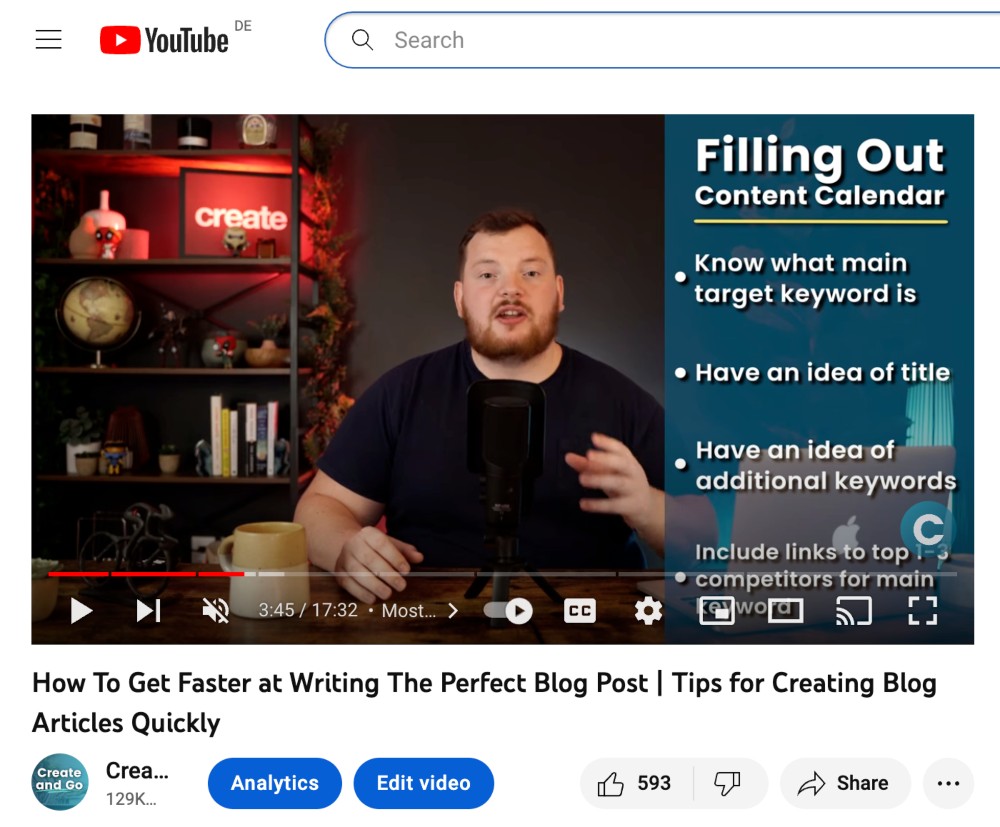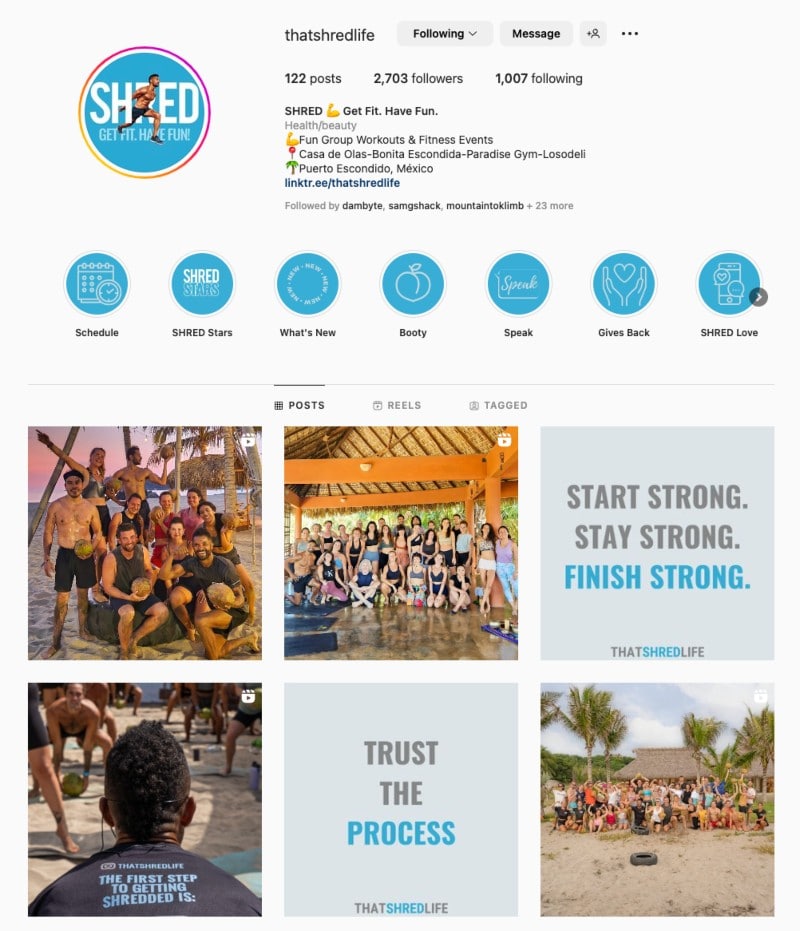We partner with bada$$ companies that offer products that help our readers achieve their goals! If you purchase through our partner links, we get paid for the referral at no additional cost to you! Read our disclosure for more info.
Are you interested in learning how to start a blog? Blogging is an incredible way to build a creative space of your own that can also have a big payoff.
Starting a blog was the best decision we ever made. It launched us into a new life full of freedom and adventure that we could never have imagined.
But with so much competition out there, it can be difficult to know how to start a blog successfully and the right way.
We were in corporate jobs before we started blogging, and we were tired of chasing fleeting weekends and vacations that never lasted long enough.
Fast forward and we have since:
- Started 5 blogs in various niches
- Earned $100,000 with our first blog and a combined $1 million across various blogs
- Taught over 17,000 students how to make money with a new blog
That’s why we’ve put together this comprehensive guide on how to start a blog in just 20 minutes or less – without any website coding skills.
Here is an overview of the steps to start a blog:
- Choose Your Blog Topic and Name
- Take Your Blog Online With a Hosting Plan
- Design Your Blog With a Theme and Plugins
- Write Your First Blog Post (With AI)
- Promote Your Blog and Get Readers
- Make Money With Your Blog
We’ll wrap it up by showing you 5 different ways you can begin earning money through blogging right away—no matter what type of blog you have or what topics you want to cover.
Also, here are a few frequently asked questions you may have at this point:
What is a blog?
A blog is a regularly updated website or web page, typically run by an individual or small team, that is written in an informal or conversational style. Blogs often focus on a particular subject or topic, and can function as an online personal journal, a niche content hub, or a marketing platform for businesses. A blog is really just a way for a website to provide additional information on relevant topics.
Should I start a blog?
Whether you should start a blog depends on your goals and interests. Blogging can be a great way to share your thoughts, expertise, and creativity with the world. It allows you to build an online presence, connect with like-minded people, and earn income.
We love blogging because it has allowed us to build a very versatile online business that allows us full creativity over our content and, of course, to earn an income from home!
How much does it cost to start a blog?
The cost of starting a blog can vary depending on your approach. You can incur costs for a variety of software and services, including web hosting, premium themes, email marketing tools, advertising, and more. The good news is, we are going to show you how you can start a blog for just $33 for web hosting and utilize free tools and software for everything else! The key is to minimize your costs up front and only start spending more as your blog grows and you can start earning some money!
How much money do bloggers make?
Blogger income can vary widely, from a few dollars per month to six or even seven figures per year for the most successful bloggers. Many bloggers earn around $200-$2,000 per month from various monetization methods like advertising, affiliates, and sponsored content. Bloggers who create and sell their own products and services, like courses and coaching, can earn upwards of $10,000 to even $100,000+ per month.
1. Choose Your Blog Topic and Name
The first step to learning how to start a blog is to set yourself up with a solid foundation, and that starts with your blog niche, or blog topic, and your blog name.
This is a place where a lot of people get hung up and end up delaying the entire process, but we’re going to get you cruising through this part with a solid niche and name.
How to Choose a Blog Niche
A blog niche, or blog idea, is the main topic that your blog focuses on.
Ideally, your main blog topic should be something you’re passionate or at least knowledgeable about so that you can provide great content for your audience.
If you’re unsure about what topic you want to start a blog on, you can use these 5 questions to help narrow it down:
- What do you have professional or personal experience in?
- What are your hobbies? What do you really enjoy doing?
- Have you overcome any problems? Can you share that journey?
- What would your friends or family say you can’t shut up about?
- What do they go to you for advice for?
What are some popular and successful blog niches?
Some great general blog topics that are known to be profitable include:
- Health, Fitness, Dieting, Recipes
- Parenting, Home, DIY, and Crafts
- Beauty, Fashion, Lifestyle
- Finance, Budgeting, Saving, Investing
- Relationships, Self-Help, Recovery
- Tech, Gaming
- Pets
- Travel
The possibilities are endless, but it’s best to keep it simple when you start blogging.
You can also use AI to help you choose a niche or to generate ideas for your main blog topic. Try using a prompt like this with ChatGPT or another AI tool:
I want to start a blog about health and fitness that is related to eating whole, healthy foods. What are some blog niche examples related to this topic?
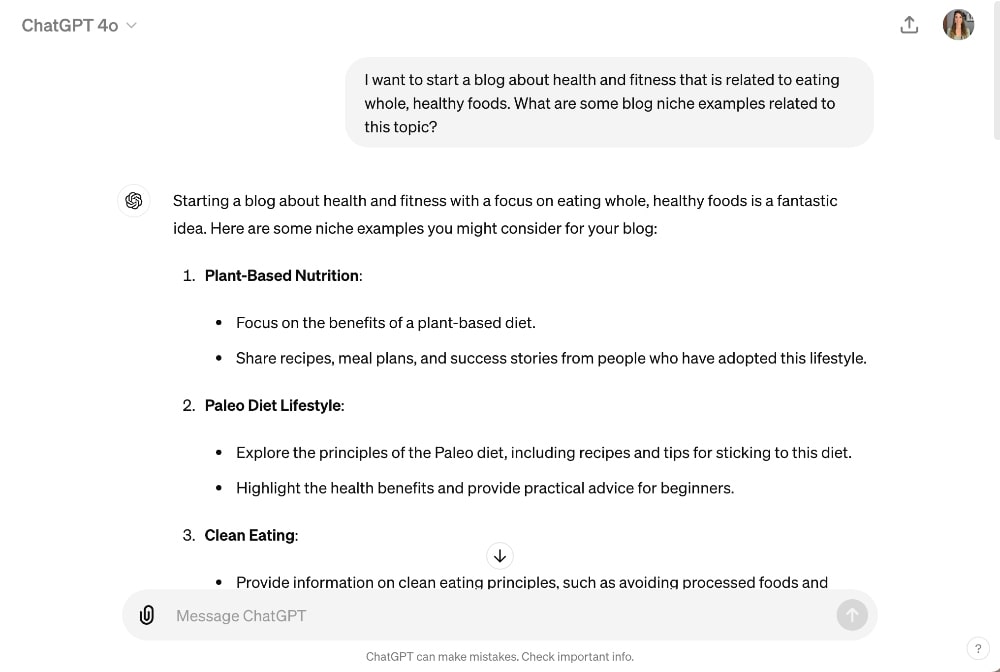
How to Choose a Great Blog Name
Next, you’ll want to choose your blog name, which will also be the domain name of your site (the URL).
What is a domain name?
A domain name is your website’s address on the internet. It’s the URL or web address that people will type into their browser to visit your blog. For example, “example.com” is a domain name. The domain name for this blog is createandgo.com.
You can also start a blog with a “.co” rather than a “.com,” but .com is the most recognizable, so try to find a domain name that works for you that also uses a .com.
Your blog name can be descriptive of the blog topic or include or personal name (popular if you run a more personal blog) or some combination of the two.
Just make sure that your blog name is:
- Easy to spell
- Easy to pronounce
- Easy to remember
You can also use our free blog name generator if you want to get some more ideas before you create a blog.
Do I have to choose my domain name right now?
No, you don’t have to choose your domain name right away when starting a blog. If you’re unsure about your domain name right now, you can set up hosting and start building your blog and decide on the name later. We’ll show you how to do that in the next step.
What if my domain name isn’t available?
If your desired domain name is already taken, don’t worry. This is very common. Try making your domain more descriptive by adding words before or after (i.e. thefitnessblog.com). You can consider adding your name somewhere in your domain or just get creative and try to come up with some different alternatives. Use AI to help you come up with different variations of the domain names that you like.
You can also ask ChatGPT to help you generate some blog name ideas. Try this prompt (swap out your blog topic in the example below):
I want to start a blog about eating whole, healthy foods for the entire family with a focus on cooking meals quickly and on a budget. What are some blog name ideas related to this topic?
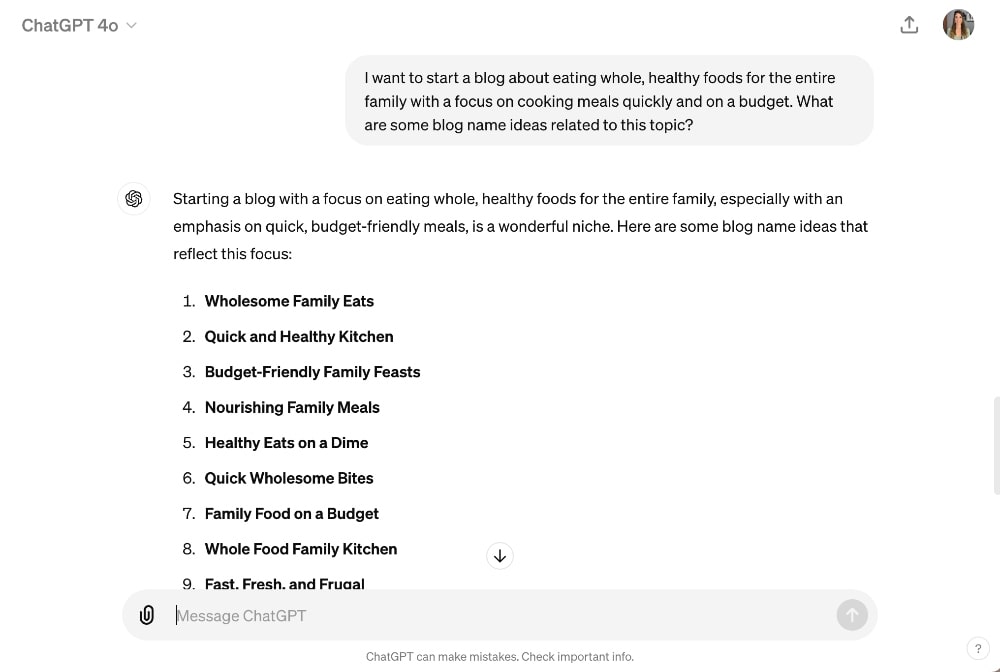
2. Get a Hosting Plan to Take Your Blog Online
In order to start a blog, you need to do two things, although they can be knocked out in one step:
- Choose a blogging platform.
- Get a hosting plan for your blogging platform.
WordPress is the blogging platform that most high-earning bloggers use because of the wide range of customizations and plugins. Platforms like Wix and Squarespace are better suited for other types of businesses (not blogging).
The good news is: WordPress is free with your blog hosting plan.
What is a blogging platform?
A blog platform is an online software and content management system that allows you to create a blog and manage it easily – without coding. It provides features such as customizable themes, text editing tools, user registration, and media management. A blogging platform enables you to easily publish content such as articles, images, videos, and audio files. Popular blogging platforms include WordPress, Wix, and Squarespace.
Can I start a blog for free?
A free blog generally has limited features, customization options, and advertising restrictions. You also won’t own your own domain or have access to the full range of plugins or themes available with WordPress. With a self-hosted WordPress blog, you have more flexibility over design and functionality due to the thousands of plugins and themes you can use to customize your website. Because of this, you can make more money blogging (and quicker) with a paid blogging site. A free blogging platform is better for a personal blog or hobby blogger.
What is a blog hosting plan?
A blog hosting company is a platform that provides the technology and services for website hosting, domain registration, email accounts, and other necessary features for running a successful blog. It’s important to choose a good and reliable hosting company that is also affordable and ideal for beginners.
In this tutorial, we will walk you through how to start a blog with Bluehost for as low as $2.75/month (plus a free domain name).
This includes an exclusive discount just for our readers that you won’t find on their website.
We host several blogs on Bluehost and have been using them for years. They also have 24/7 customer service and are known for being one of the most reputable hosting companies in the industry.
Select Your Hosting Plan
They make it super easy to start a blog in just a few clicks! To get started, you can click here to open Bluehost (opens in a new window) (includes discount).
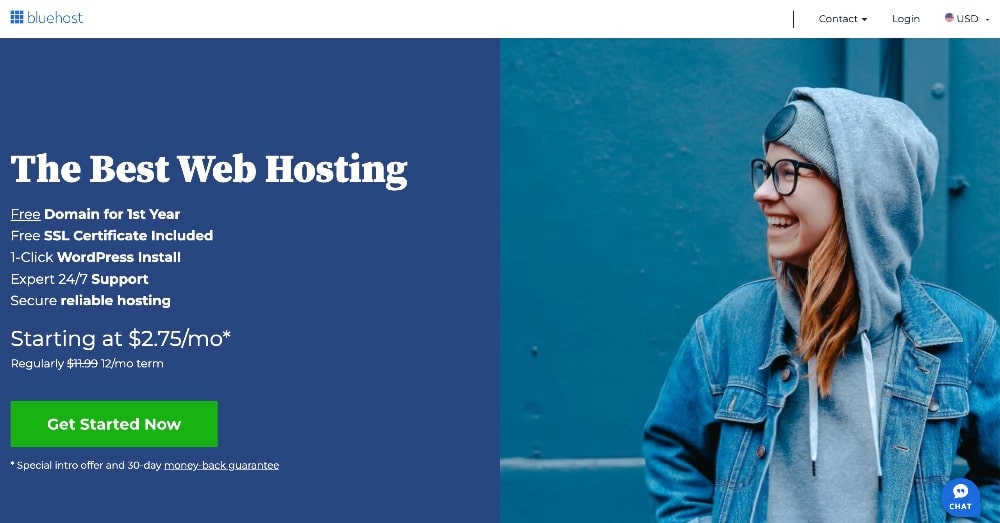
Next, click on the button to get started and you will be directed to a page with pricing options.
You can select just the Basic plan — you shouldn’t need any extra bells and whistles when starting a blog.

After selecting your plan, you will be prompted to enter your new, free domain name.
This is simply the name of your blog and what will show up in your URL: i.e. Createandgo.com is our custom domain name for this website.
If you still aren’t sure about your custom domain name, you can still finish starting a blog now and click the link to “create my domain name later.” Otherwise, enter your blog’s domain name and click continue.
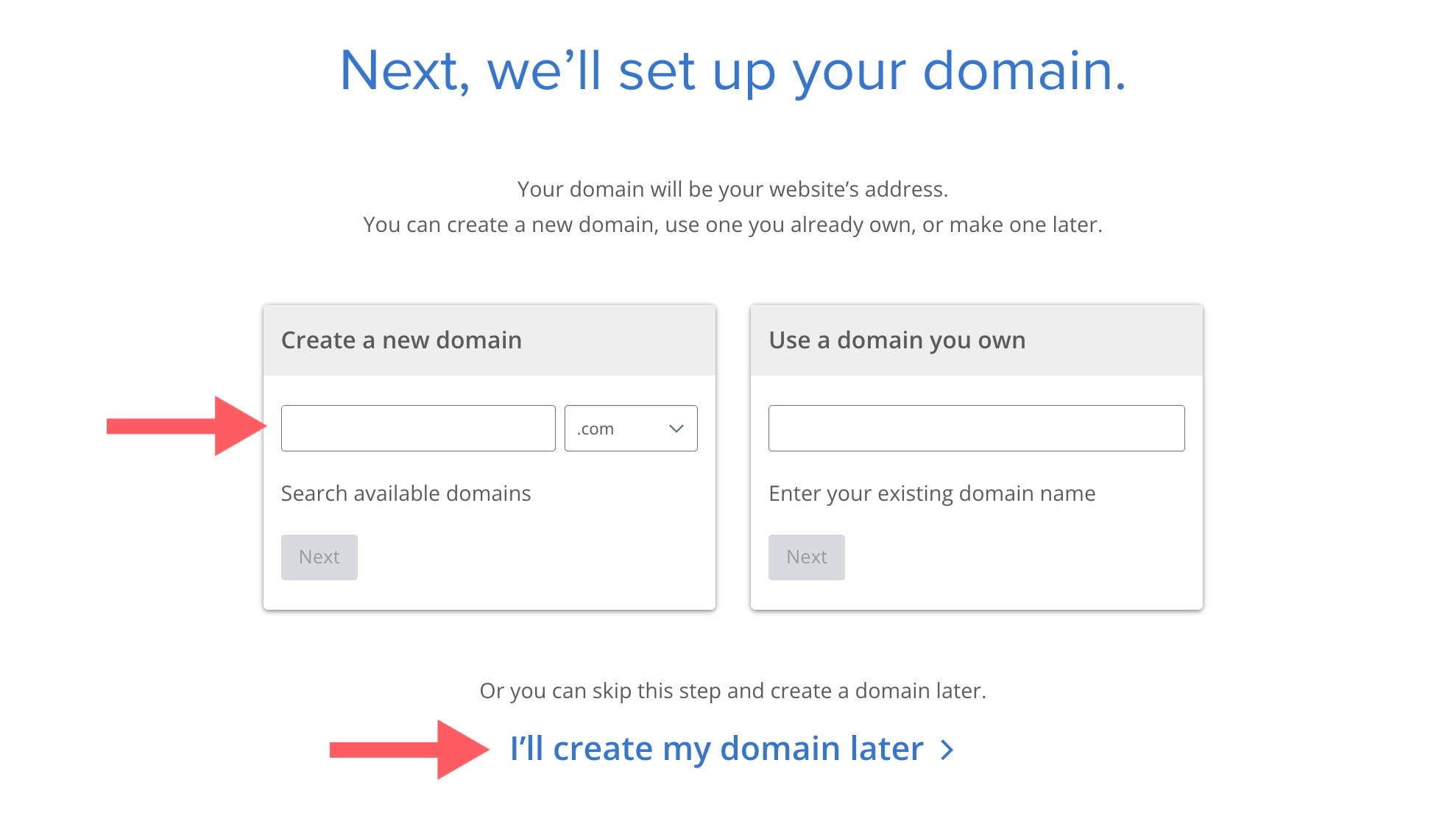
Remember that Bluehost comes with a free domain name for your first year!
On the next page, you will first be prompted to fill out your information to create your Bluehost account:
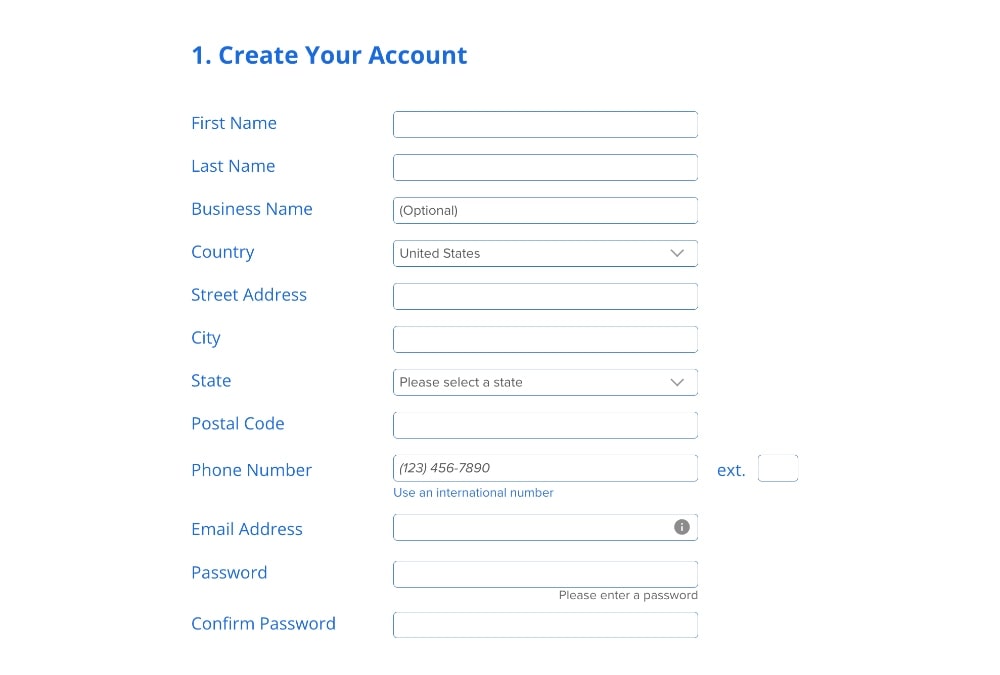
Then you can scroll down to select your account plan. I would recommend just starting out with the lowest-cost, plan for just $33.

After selecting your package information, scroll down to the section on package extras.
You don’t actually need any of the package extras.
The only one to consider is domain privacy protection (note: you won’t see this option if you selected the option to choose your domain name later).
Domain privacy protection hides your personal information from the public domain directory, so it could save you a few sales calls if you want to pay to keep these details hidden.
This isn’t necessary when starting a blog and is an optional cost.
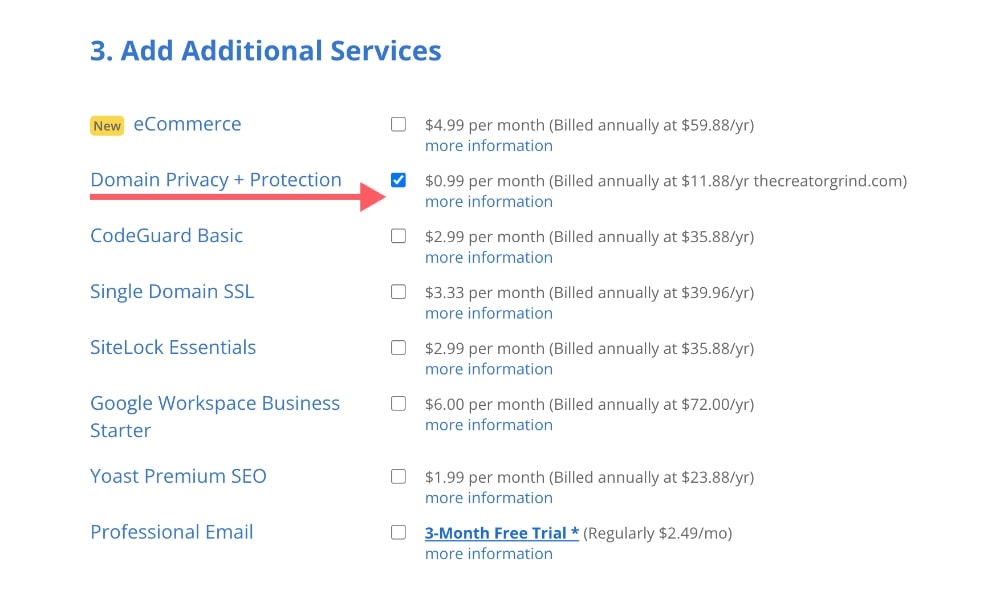
Finally, all you have to do now is enter your credit card details, check the standard Privacy Policy and Terms of Service, and hit the blue submit button!
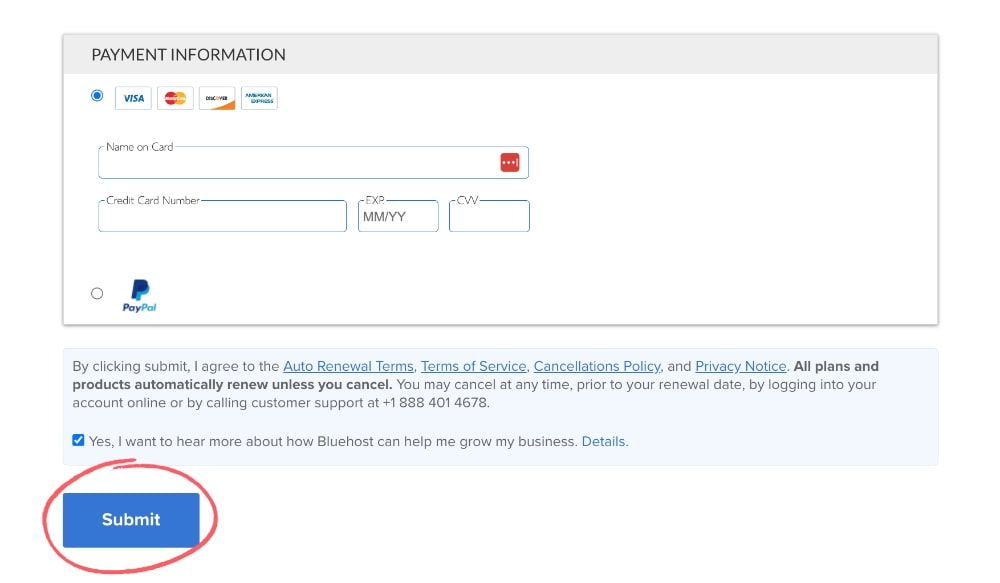
Congrats! You are now the proud owner of your own blog!
The next few steps will direct you to create your password and start automatically installing WordPress!
Explore WordPress
The next step in learning how to start a blog is getting WordPress set up and choosing a theme.
You will initially be prompted to choose from one of several free WordPress blog themes to start blogging with or to take a few other next steps. You can choose any theme for now just to get started and we’ll show you how to install a better free theme in the next section.
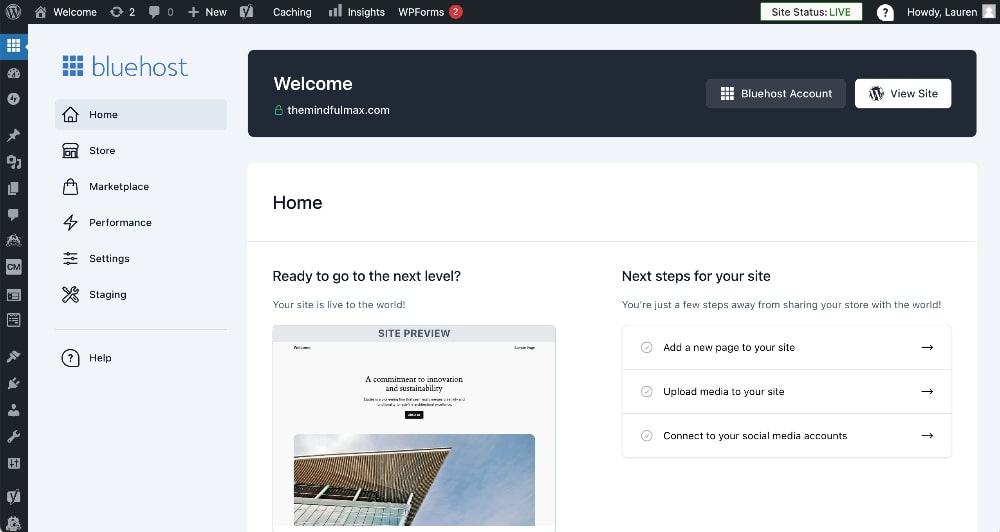
Access WordPress and Bluehost Dashboard
One important step in learning how to start a blog is to know where to access your new blog in case you need to log in again or ever get locked out in the future.
There are two different ways to get back into your WordPress blog dashboard:
- Go to Bluehost.com and log in using the email and password that you created in the setup above. From here, you can click on the Login to WordPress button.
- Once you’ve set up an admin user in WordPress, you can access your WordPress dashboard anytime in the future by visiting this URL where you will be prompted to log in: yourdomainnamehere.com/wp-admin/
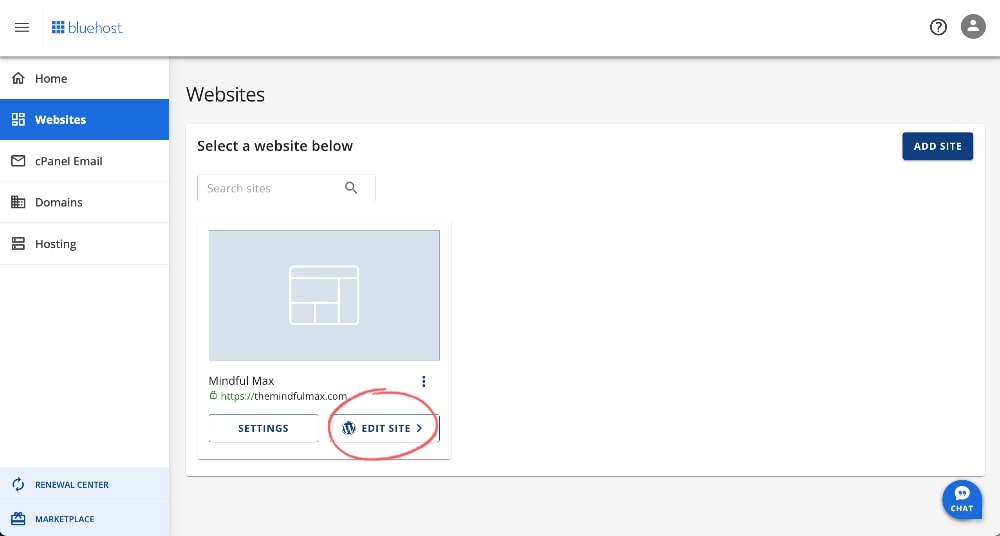
Overview of Basic WordPress Features
WordPress can be a bit daunting to learn when you’re just starting a blog and while there is a bit of a learning curve, I promise you that it isn’t that bad!
Once you understand the basics, you’ll get the hang of it really quickly. We’ve highlighted the main areas you will be working with below:
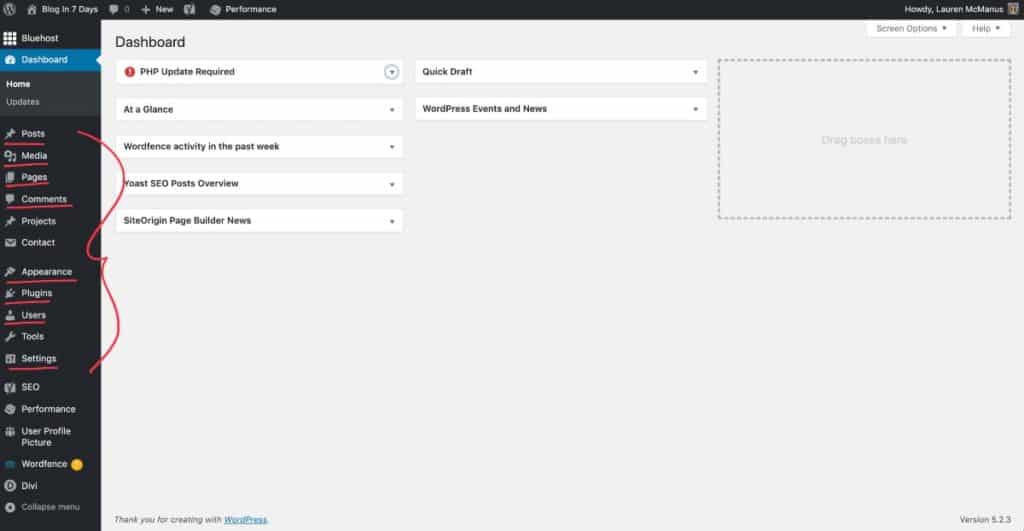
Here is a basic overview of these features:
Posts and Pages
Your posts and pages are where you will add content to your new blog.
Blog “posts” are where your blog articles will be. You can create different blog categories to organize your blog articles.
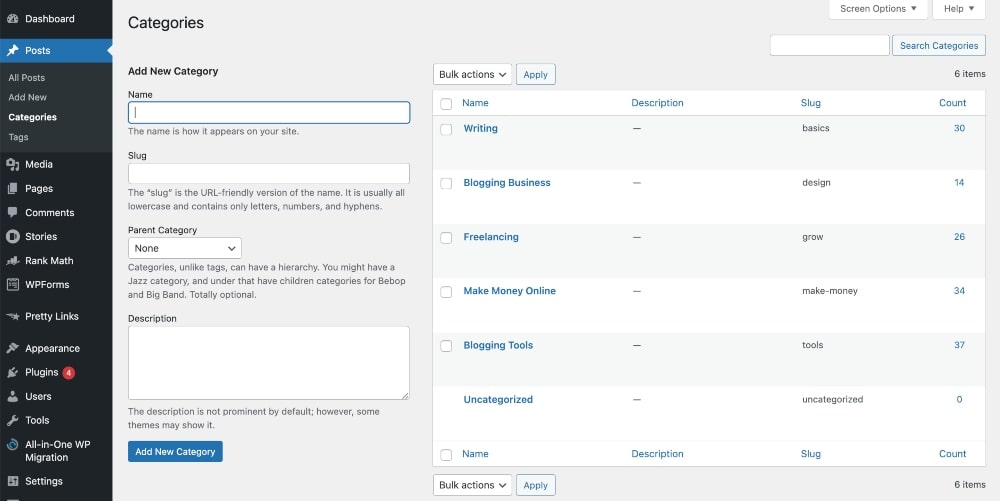
“Pages” are for any other, more static pages on your site that aren’t updated very regularly (like your contact page, about page, and legal pages).
Pages are usually linked in your menus and/or at the bottom of your website.
Media Library
The media library is where all of the images that you upload to your blog are stored.
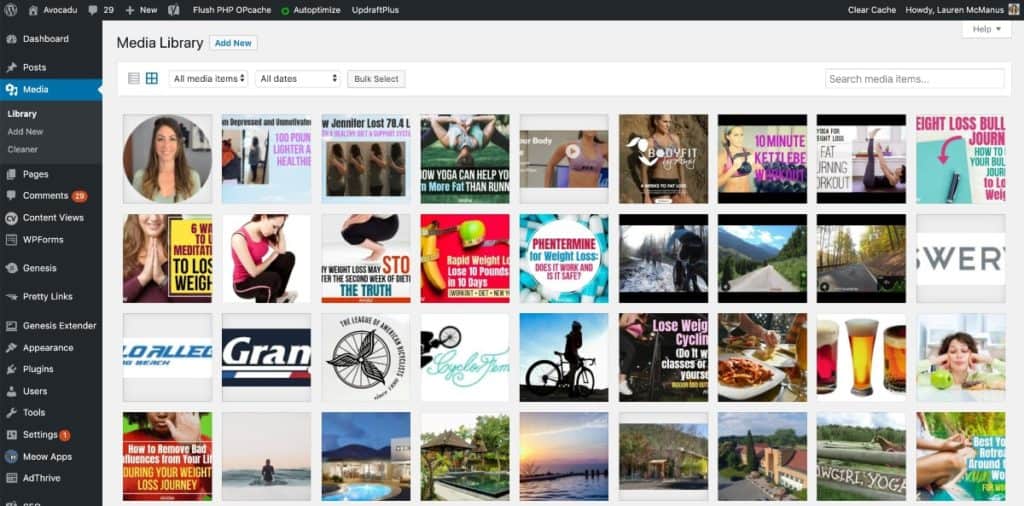
You can add images directly to the media library or you can add them directly to specific blog posts and they’ll automatically be added to the library.
Appearance
This is where you can make customizations to your new blog like changing themes (discussed in the section above on themes). You can also create and edit your menus, sidebars, and other widgets in the Appearance section.
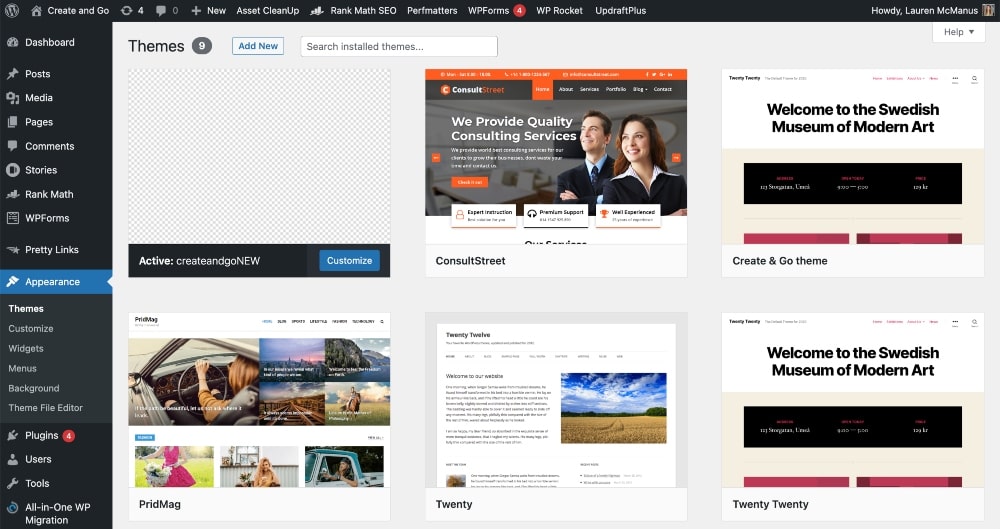
Plugins
A plugin is add-on software that you can install on your blog to make additional customizations that are outside the capabilities of your theme.
There are both free and paid plugins and they can help you change the look of your author box, help speed up your website, add social icons, and more.
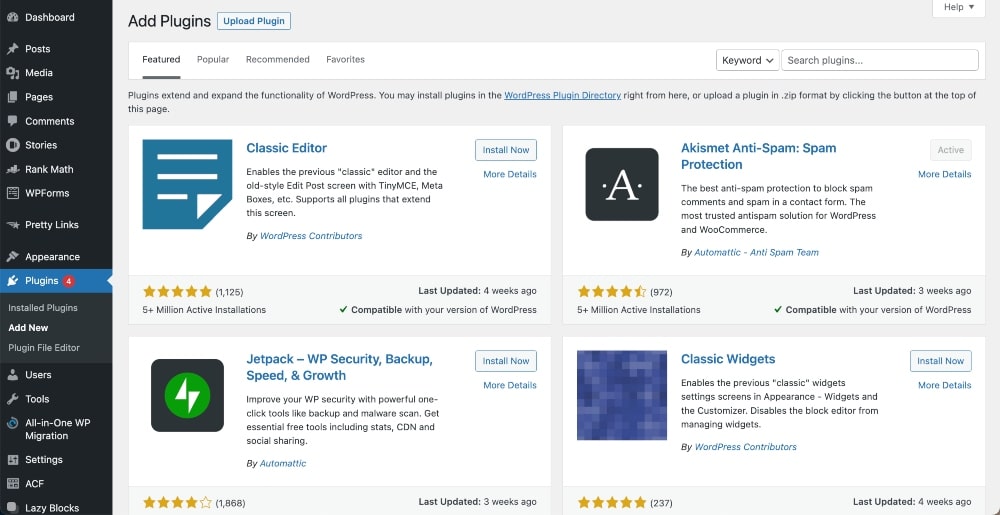
We’ll share a complete list of our favorite plugins later on in the article!
Settings
This is where your general blog settings are, including how some things are set up and displayed on your blog (site title and headline, time zone and date, comments, and other display settings).
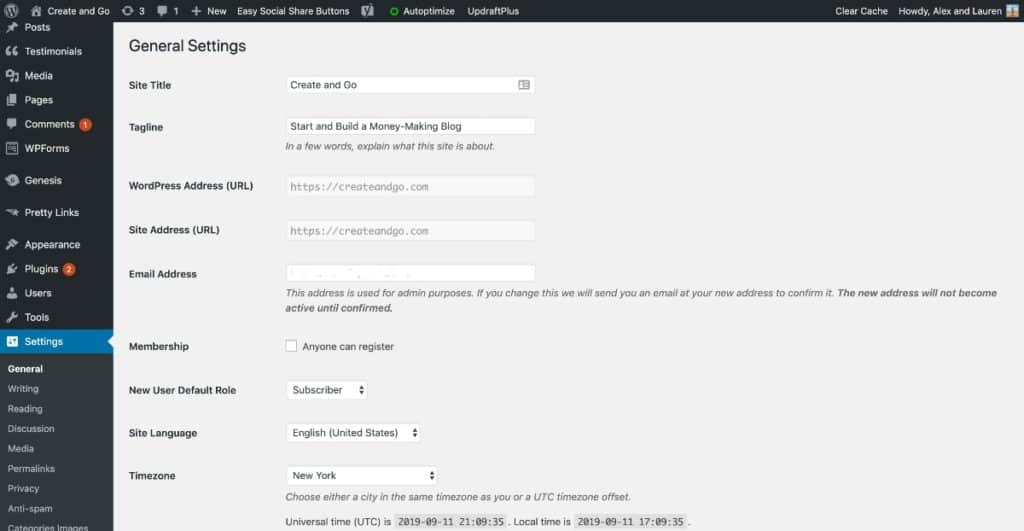
The best thing that you can do to get ahead of the learning curve is simply to start playing around with your WordPress blog and familiarizing yourself with the different settings.
But before you get too far down that black hole, let’s move on to blog themes because installing a new theme will change some of the WordPress settings anyway.
3. Design Your Blog With a Theme and Plugins
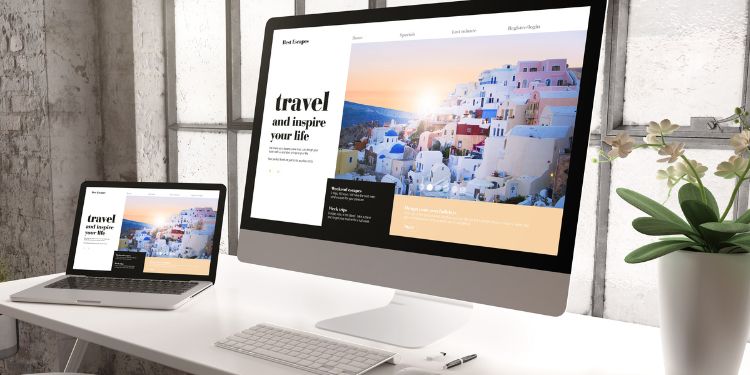
One of the biggest steps to create a blog is, of course, to design it, and you will need a good theme for that. A blog theme is pre-coded website design software that allows you to customize the design of your blog without having to do any coding yourself.
There are thousands of free and paid WordPress themes, but a couple of the most customizable and beginner-friendly themes are Astra and Kadence.
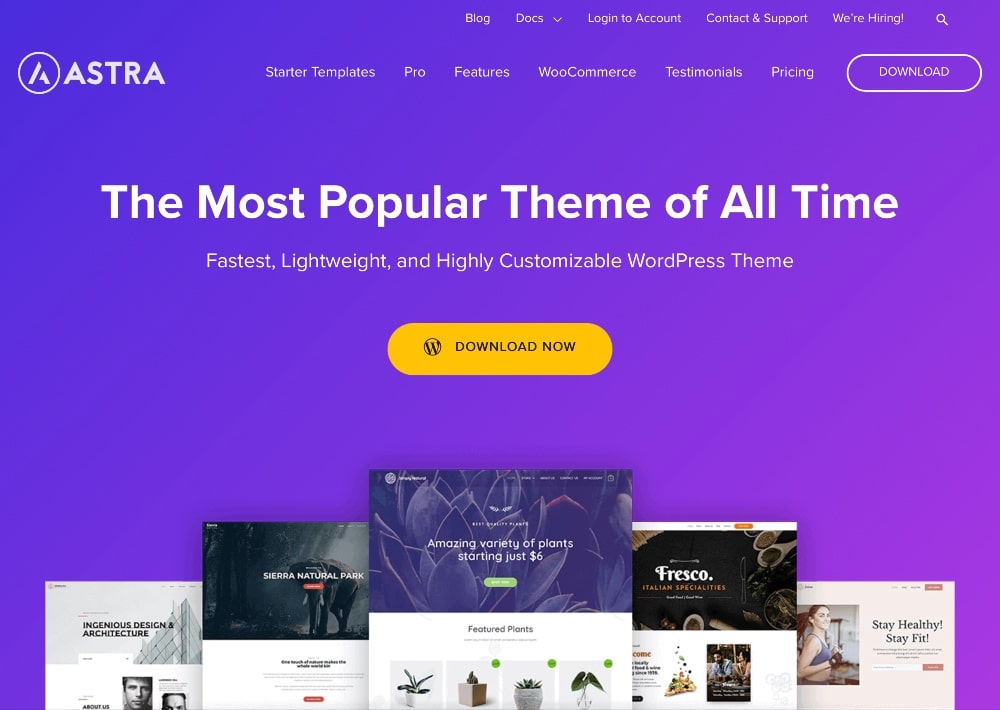
You can also start with a paid theme, like Divi, for added customizability but a free theme will work for most people to start with.
If you start with a free theme, make sure to download the free Elementor plugin to add extra customizability. Elementor comes with a drag-and-drop page builder that will allow you to create very customizable pages and design your home page however you want.
How to Install a WordPress Theme
Some WordPress themes require you to purchase or download the theme from the company’s website. You’ll need to download a zipped file of the theme that you chose and then upload it to WordPress in your themes area.
To change your WordPress theme, just navigate to Appearance –> Themes.
You can change your WordPress theme at any time, but it can cause changes in your new blog design. Make sure to check everything out every time you change your theme.
Blog design is probably the biggest area that people get hung up on when learning how to start a blog successfully and it can lead to a lot of wasted hours.
The truth is that you will end up changing your blog design many times as your blog grows, your content strategies change, and you start making money blogging. As you start building an audience, you will begin to learn more about who they are and what they are interested in and that will help determine how you design your blog.
The overall design matters very little in these early stages, so it’s best to stick with something simple and professional. You can also get some additional ideas for blog design in this article.
Create Important Pages
The first step to designing your blog is just to create the first few most important pages on your website.
Write an About Page
Writing a good About page for your blog is one of the most important aspects of building a successful blog.
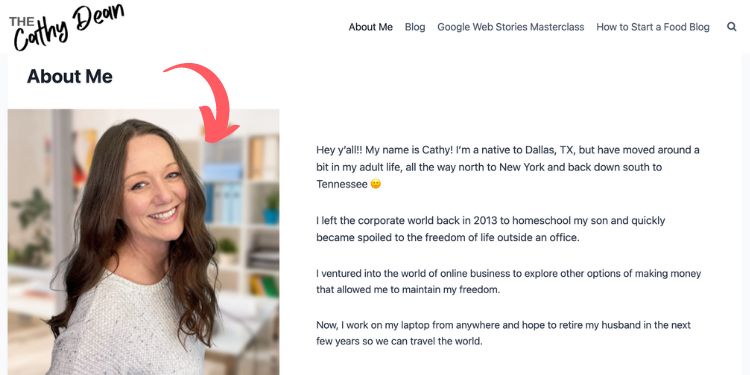
Your About page serves as an introduction to your blog, allowing readers to learn more about you and develop trust with you.
It should be unique, personal, and offer insight into what readers can expect from your content.
When writing your About page, make sure to include:
- Who you are,
- What inspired you to start a blog,
- What topics your blog will cover,
- and what readers can expect from your blog.
Include at least one photo and make sure to add some social media links after you set up your profiles (more on that later).
Create a Contact Page
Your Contact page should be very simple and include a form that people can use to contact you. As we mention in the next section on plugins, you can install a free plugin like WP Forms Lite to use on your Contact page.
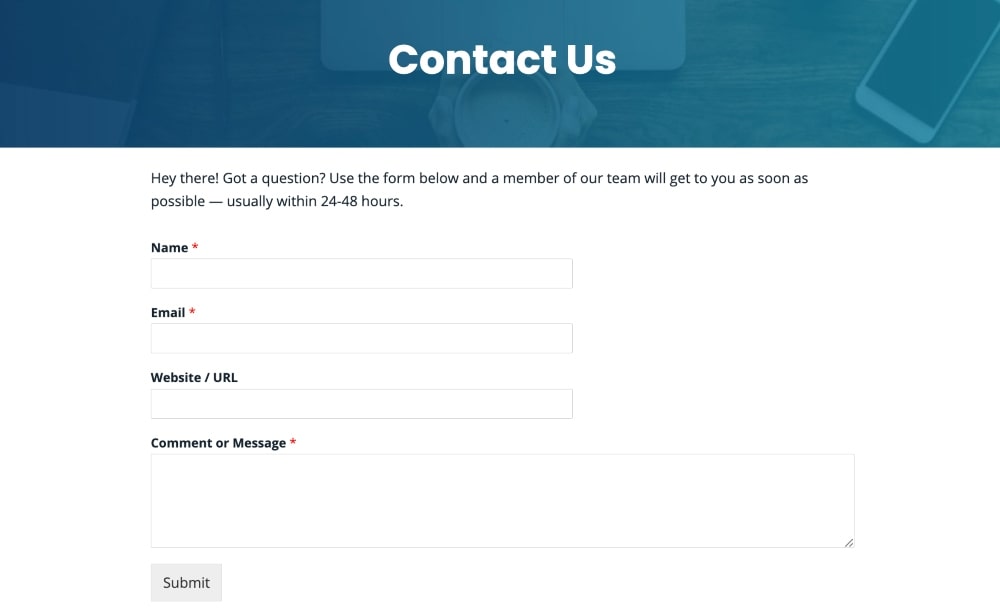
Include a couple of sentences telling visitors that they can use the contact form to contact you and provide an expected response time (i.e. 24-48 hours).
Set Up Your Blog Menu
Setting up a blog navigation menu is important for website usability and organization.
It’s best to keep your menu items organized into categories with clear labels that describe the content within them. For example, a blog that covers lifestyle topics might have menu items labeled “Fashion”, “Beauty”, “Recipes,” etc.
Alternatively, you could just include a link to your Blog page.
This will change and you won’t have much to add to it right now, so keep it simple and just add a link to your blog and your About page.
To set up your WordPress menu, navigate to “Menu” in the WordPress dashboard.
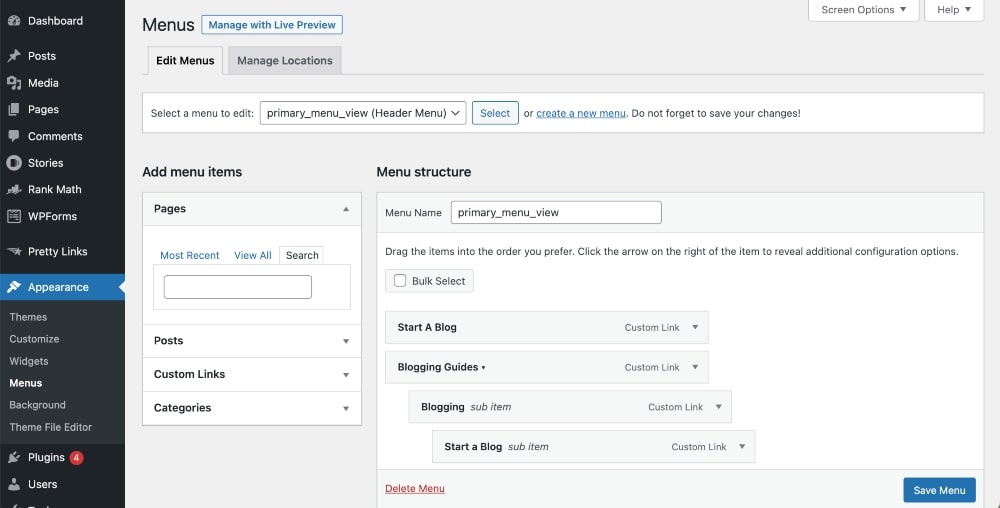
Set Up Your Blog Footer
Your blog footer is usually the last thing a reader reads and also where users expect to find other information such as your legal pages, contact page, and more.
You won’t have much to add here right now, so you can just add a link to your contact page for now.
Later on, you will want to set up some legal pages and consider adding an email opt-in.
To set up a menu or navigation bar on your footer, navigate to “Menu” in the WordPress dashboard and select or create a new menu for your footer area.
Set Up Your Homepage
Your homepage is probably what you are most excited about when it comes to designing your blog, but we are going to keep this simple for now so that you can make it through the rest of this how to start a blog step-by-step guide.
Once you have a better idea of how to promote your blog and how you will be making money, you can revisit this and start to get more creative with your blog design.
For now, it’s best to choose to set up your home page with your blog posts because your focus should be on getting your first 5 blog posts up as quickly as possible.
Here are some simple instructions on how to set your homepage as your blog posts:
- Navigate to Settings > Reading in your WordPress dashboard.
- Click “Your latest posts” to display on your homepage at the top of the page.
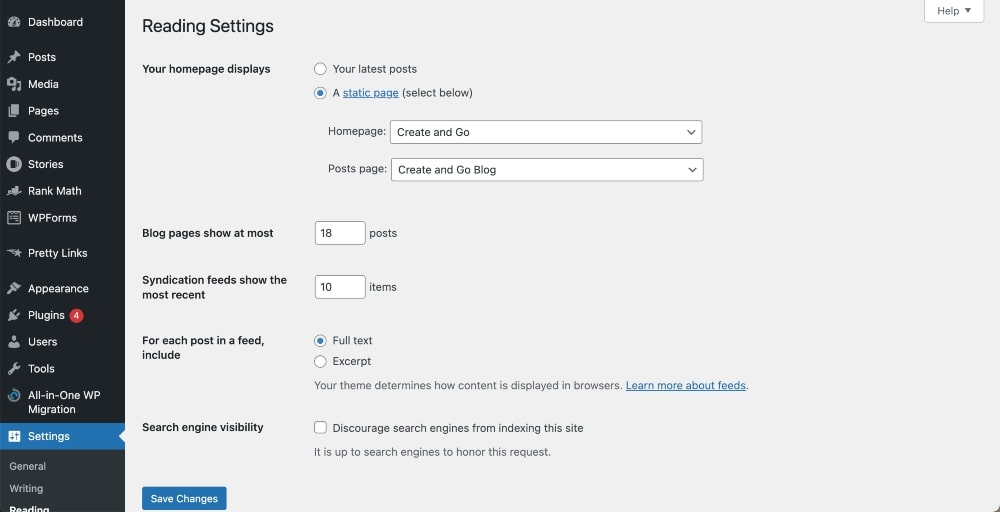
Note: You can change this back to “a static page” any time that you want to change it and start designing a custom home page.
Helpful WordPress Blog Tutorials
The following pages will help you learn more of the basics for your WordPress blog:
7 Free Plugins to Install on Your Blog
As we mentioned earlier, you should install a few important plugins right from the start to make sure that you’re running a successful blog from the start.
How to Install Plugins on Your Blog
Navigate to “Plugins” in your WordPress dashboard and click “Add New.” You can either type in the name of the WordPress plugin you want to search for or click “Upload Plugin” to upload a plugin directly to your WordPress site. Some plugins must be downloaded directly from their website and uploaded to WordPress.
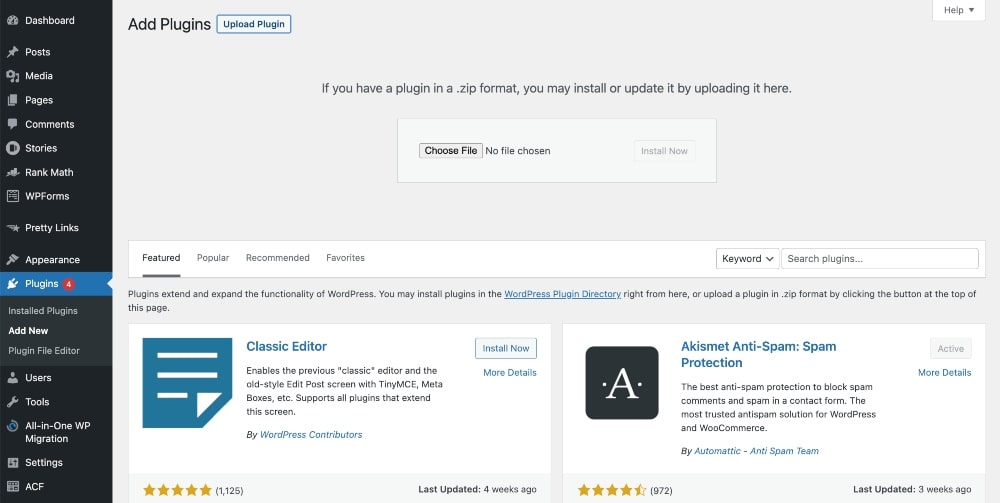
Here is a short list of our top recommendations for free plugins:
1. RankMath (SEO)
RankMath is an SEO plugin that can help bloggers optimize their website and content to make it easier to rank in search engine results pages (SERPs). It uses an easy-to-follow system that guides you through using keywords, adding meta tags, descriptions, and more.
2. WPForms (Contact Form)
WP Forms is a popular WordPress plugin that helps you easily create contact forms, surveys, polls, and more. There is a lite version that is free that you can start with!
Installing a contact form is also important because it can help to combat spam comments.
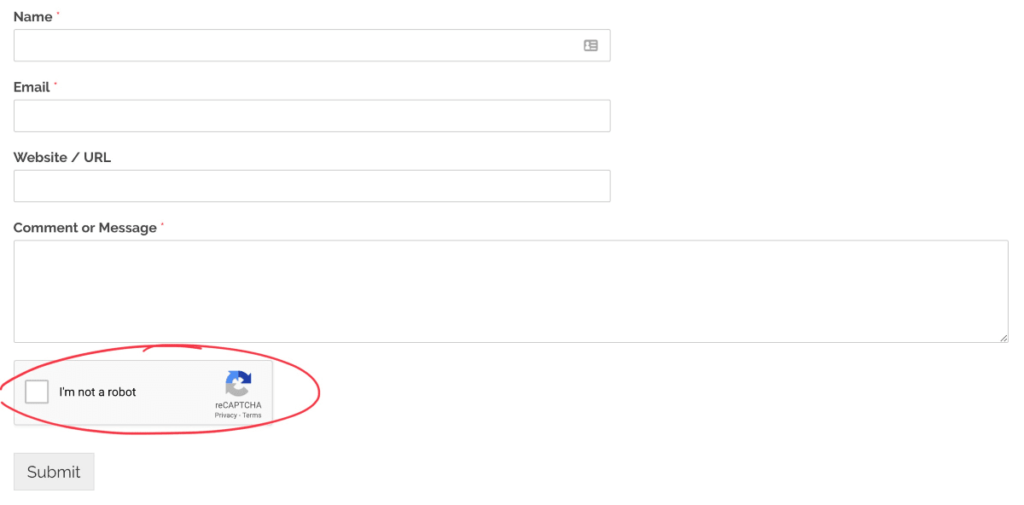
3. WP-Optimizer (Performance)
Site speed and optimization is where things can get a little technical but it’s important to download a good plugin to help your blog run more smoothly in the background.
WP-Optimizer offers a range of features, such as database optimization, file compression and caching, code modification, page performance evaluation, and more.
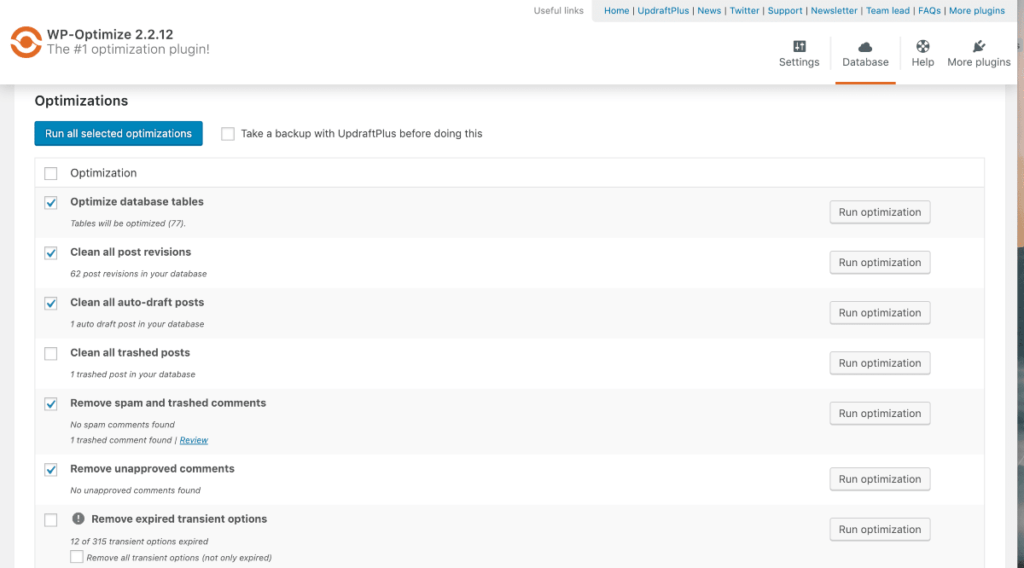
4. Pretty Links (Affiliate Links)
PrettyLinks is a popular free plugin that allows blog owners to easily manage and track their affiliate links. With this plugin, you can create custom shortened links with your own domain and track the performance of each link.
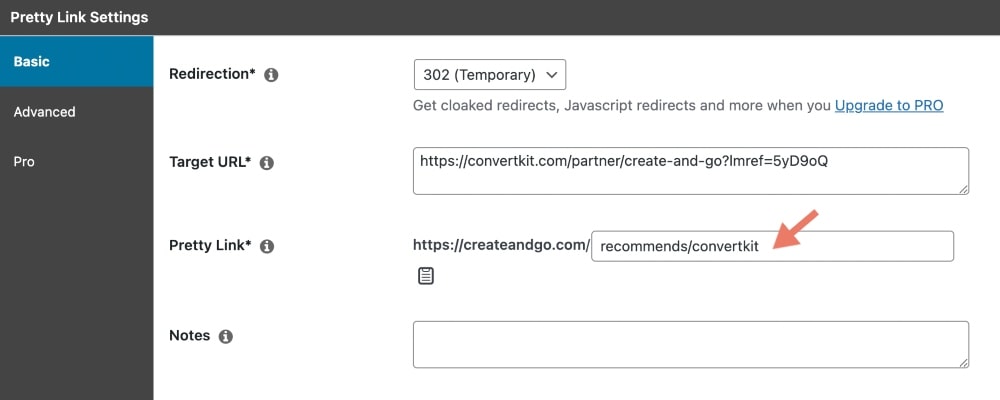
5. Updraft Plus (Website Backups)
UpdraftPlus is a great option for backing up your WordPress blog, including all your files, images, and databases. It stores backups in a secure location such as Dropbox, Google Drive, etc., so that you can easily access them if anything goes wrong with your site.
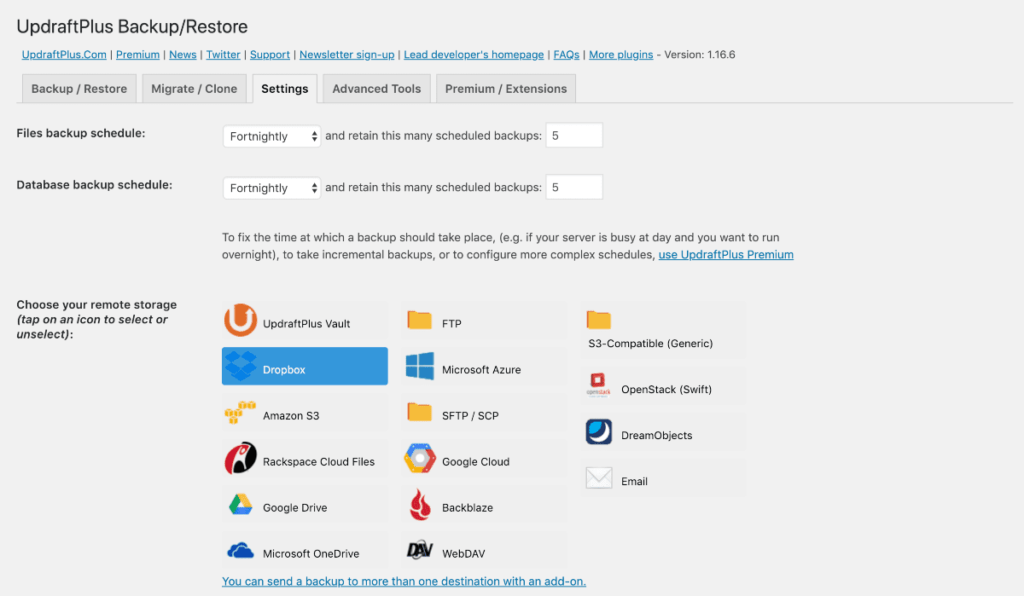
6. WordFence (Security)
The Wordfence plugin helps to ensure the security of a blog by monitoring and blocking malicious traffic. It uses an advanced firewall to prevent hackers from gaining access to your site, as well as scans for malware and malicious redirects.
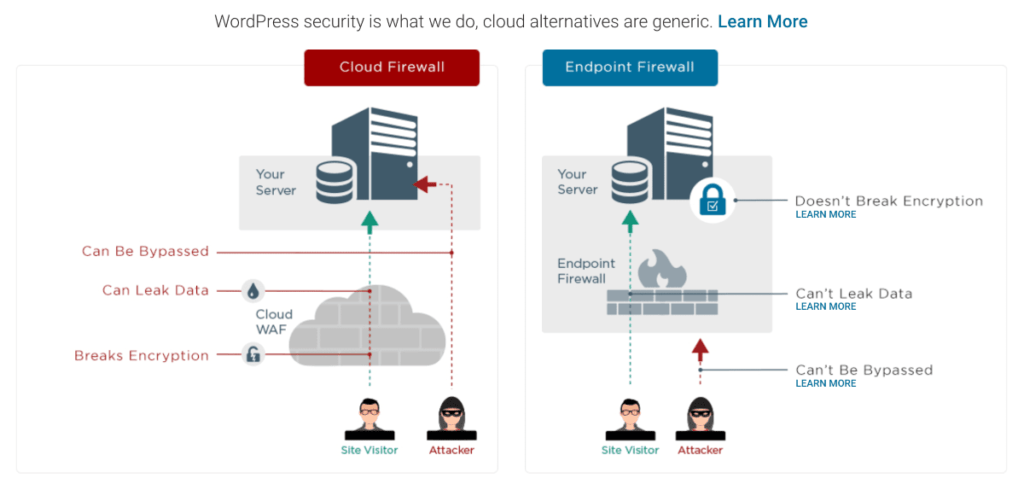
7. UserWay (Accessibility)
The UserWay plugin is a WordPress plugin that helps to ensure a website is accessible and usable for all users. It adds an accessibility widget to your website, allowing visitors to adjust font size and color, as well as turn on a screen reader.
4. Write Your First Blog Post (With AI)
The next step in learning how to start a blog successfully is to start publishing your first blog post. When you start blogging, you should ideally have at least 5 blog posts published before you start promoting any content.
This will make your website look more established and will ensure that you have a few pieces of content for readers to look through to see what you’re all about.
For now, we will start with just publishing your very first post on your new blog and then we will move on to setting up social media profiles and learning how to promote your blog.
Your first blog post can also be whatever you want it to be. You can take the time to create a full article on a topic that you like or you can just keep it simple and write a story about yourself and your experience with the topic that your blog is about.
If you want to write about an important blog topic, we’ll walk you through the basic steps to get started. We will also share how to write a blog post with AI to help you get more creative and write posts in a fraction of the time.
Keyword Research
One of the best ways to get blog post ideas is simply to brainstorm blog topics and then do some keyword research to decide on specific keywords to use. This will help you understand what topics are most searched for and how you can optimize your content for those terms.
You can start by asking AI to generate some keyword ideas for you with a prompt like this:
I want to write an article on [how to start a blog]. What are some possible keywords I could include in this article?
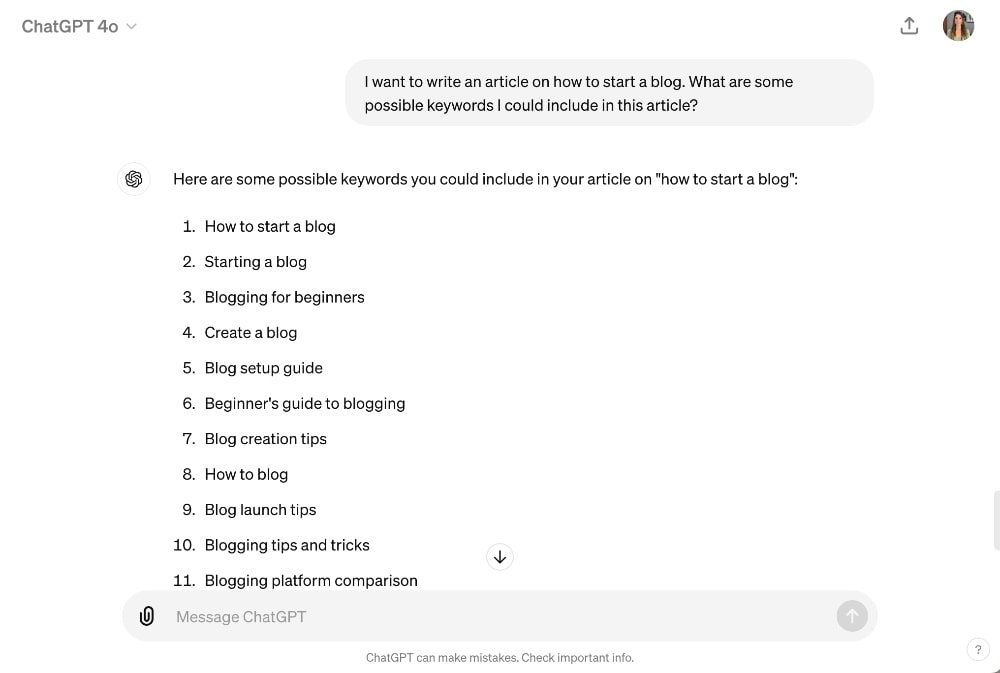
Then you could use a keyword research tool like Ubersuggest to help you narrow down which keyword you want to use based on the search volume potential and the keyword difficulty (how easy it is to rank for).
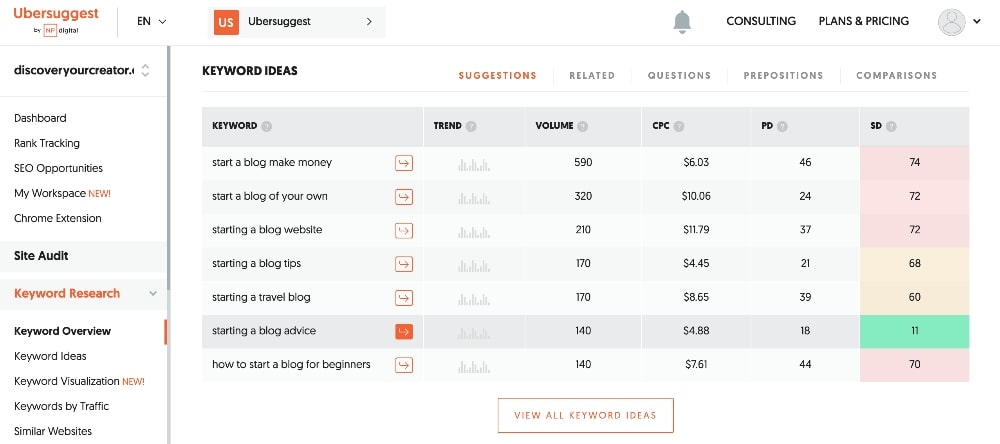
Once you have identified a few blog post ideas and relevant keywords, you can use these to write some new blog posts.
Decide on a Blog Post Title
Once you’ve decided on an overall topic, you can also use AI to come up with some inspiration for your blog post title! When it comes to actually writing my blog post, I like to use the free AI tool, Perplexity, because it also provides helpful resources that you can use in your article.
You can use the prompt below:
I want to write an article on [how to start a blog that will walk people through the exact steps to get started and earn money]. Come up with 10 possible article titles under 60 characters that I could use for my article. Make sure the article titles have the exact keywords [how to start a blog].
Make sure to always use your main keyword in your blog post title. This is really important for SEO!
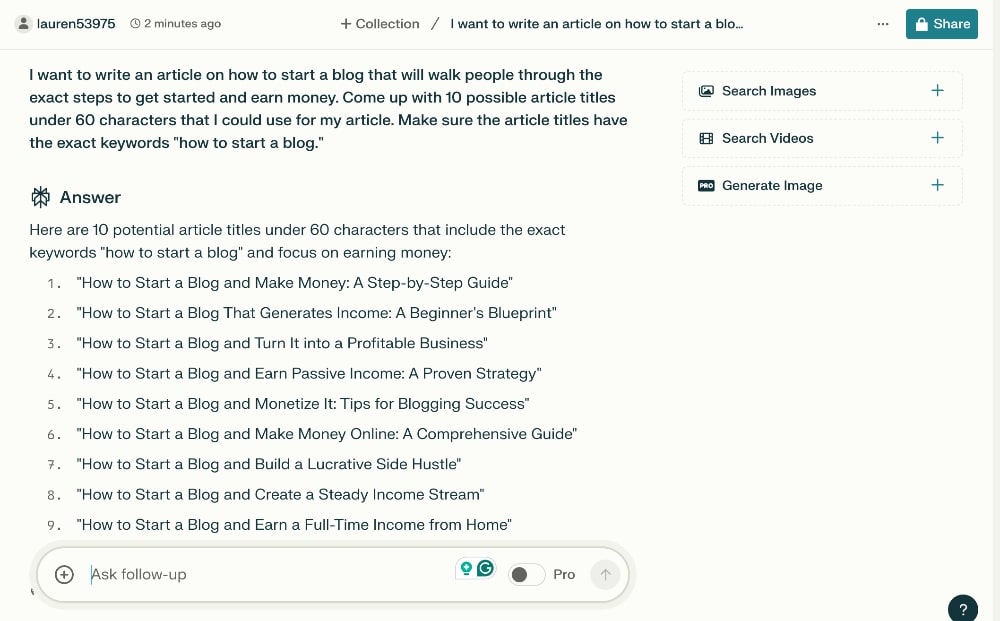
Create an Outline
Once you have identified the keywords and topic that you would like to write about, it is time to start creating your blog post outline.
A blog post structure should include an introduction, body content with important points to cover, conclusion, and any necessary headings or subheadings to make sure your content is organized and easy for readers to understand.
You can use this prompt to generate an outline with AI. Make sure to provide context on the audience you want to reach with this post.
My blog post title is: [How to Start a Blog + 6 Ways to Start Earning Money]. My target audience is [people who don’t know much about blogging yet and want to transition from a traditional 9-5 career to an online content creator who earns money through blogging.] Write an outline for this blog post.
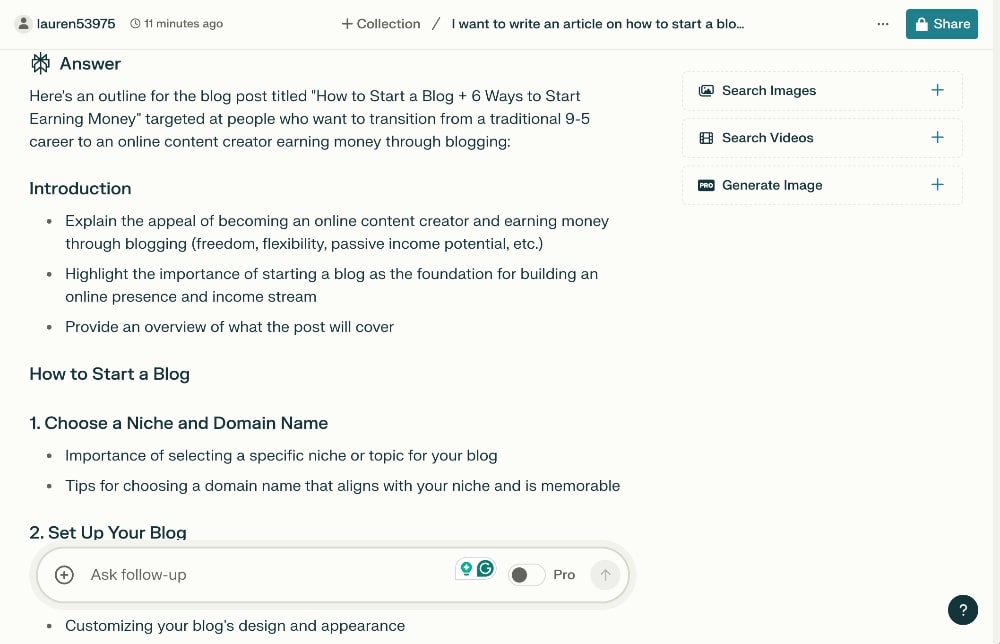
Write the Introduction and Main Content
Writing an engaging introduction for your blog post is key to capturing the attention of readers and getting them interested in what you have to say. The first sentence should be a hook that grabs their attention, while the following sentences should provide more information about the topic of your blog post and why it’s important or relevant.
Make sure your introduction also gives the reader an idea of what to expect from your blog post.
You can use this prompt to start writing your introduction and next sections:
Write an introduction for this blog post. Include a sentence in the beginning that inspires curiosity and hooks their attention. Make sure to also include what the reader will learn in this article. Make sure the tone is [friendly and relatable.]
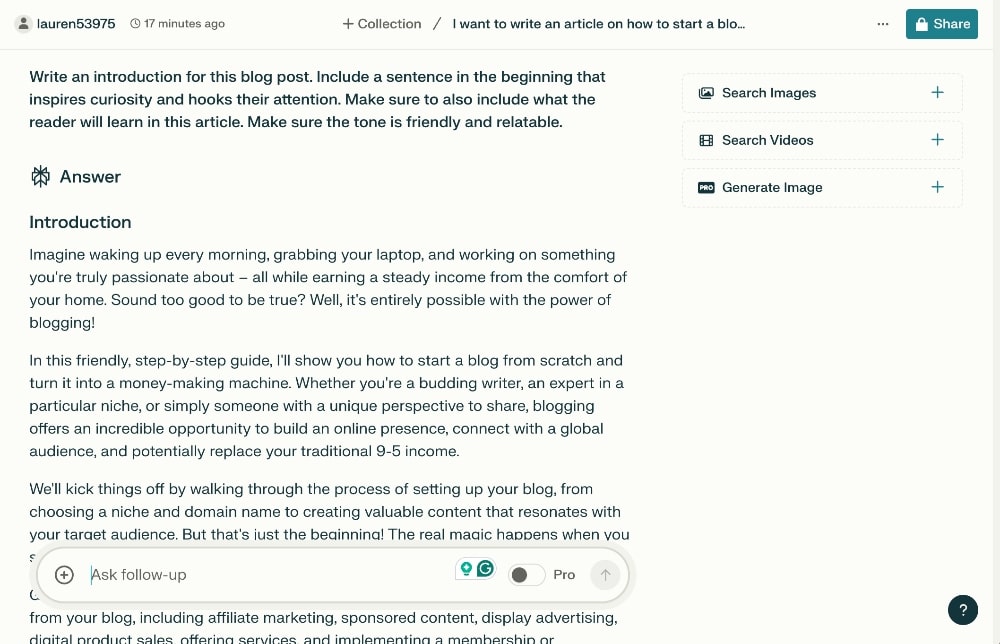
Then, you can follow up with these additional prompts:
Write the next section: [section title].
Finally, remember that when you write with AI, you need to use it more as a writing assistant rather than a writing replacement. Make sure to heavily edit your article and add your own personal thoughts, opinions, experiences, and stories to make it more unique and relatable to your audience.
Make sure to finish your blog post with a good summary and conclusion along with any next steps.
Adding Your Post to WordPress
To add your first blog post to WordPress, navigate to Posts –> Add New from your left-hand WordPress dashboard menu. Make sure to add a featured image and set the URL for your post!
5. Promote Your Blog and Get Readers
The next step in starting a blog and promoting your content is to decide what kind of content you will create and which platforms you want to share it on. Without a solid blog promotion strategy, it will be difficult to attract new visitors to your website and build brand recognition and domain authority in your niche.
There are a variety of strategies you can use to promote your blog, from optimizing for search engines to sharing your content on social media. We’re going to cover it all.
As a blogger, you can create various types of content, besides just blog writing. Each type of content – written, voice, video – will have a different method of delivery, time requirement to produce, and impact on your audience.
Writing blog posts is still a great way to make your website look more established and professional, so we recommend starting there. But that doesn’t have to be your main source of traffic if you don’t want it to be or if you don’t actually like writing.
Although voice and video content are more challenging to produce, they also tend to be less competitive.
It can be difficult to muster up the courage to put your face on camera and have a real conversation with the world, but this can also make you very relatable to your audience. This reliability can help you build trust, which makes video content a great supplemental source of traffic that can also boost sales.
In order to maximize your reach and impact, you might want to consider utilizing at least one platform for written content, such as Google or Pinterest, and one platform for video content, such as YouTube, TikTok, and Instagram.
It’s crucial to create content that both resonates with your target audience and is comfortable for you to produce. But make sure to always think of your audience here because if they primarily use a specific social media platform, such as YouTube, it’s not wise to concentrate solely on another platform like Pinterest.
Next, we’ll go over your audience and a few of the most important types of content to help you decide which direction you want to go when starting a blog with a bang!
Target Audience
Figuring out who you’re talking to in the first place is an essential step in how to start a blog that is actually successful.
When it comes to content marketing, the most important factor to consider is who your target audience is and how you can create content that specifically appeals to them.
Identifying your target audience is one of the most important parts of setting up your blog business plan and blog template because it will help you decide what kind of blog content to create and how to structure it to make sure that it reaches the right people.
Understanding exactly who your people are and what they are feeling will help you tailor your content to their specific needs and build relationships with potential customers.
It’s important to understand not only the demographic factors of your target audience such as age, gender, location, etc. but also their interests and behavior.
Questions to Ask to Better Understand Your Audience
Here are a few questions to consider to better understand your audience:
- Who is your target audience?
- What are some of the problems that they face (related to your blog topic)?
- Why are they struggling? Why haven’t they been able to fix their problem?
- What motivates them?
Knowing what resonates with them will help you create content that they will be more likely to engage with and share.
You will need to give them reasons to visit your blog and provide solutions to their problems.
Once you start getting blog traffic, you can access data on demographics through your Google Analytics account, which just takes a few minutes to set up. Until then, you should do your best to decide who you want to reach with your content.
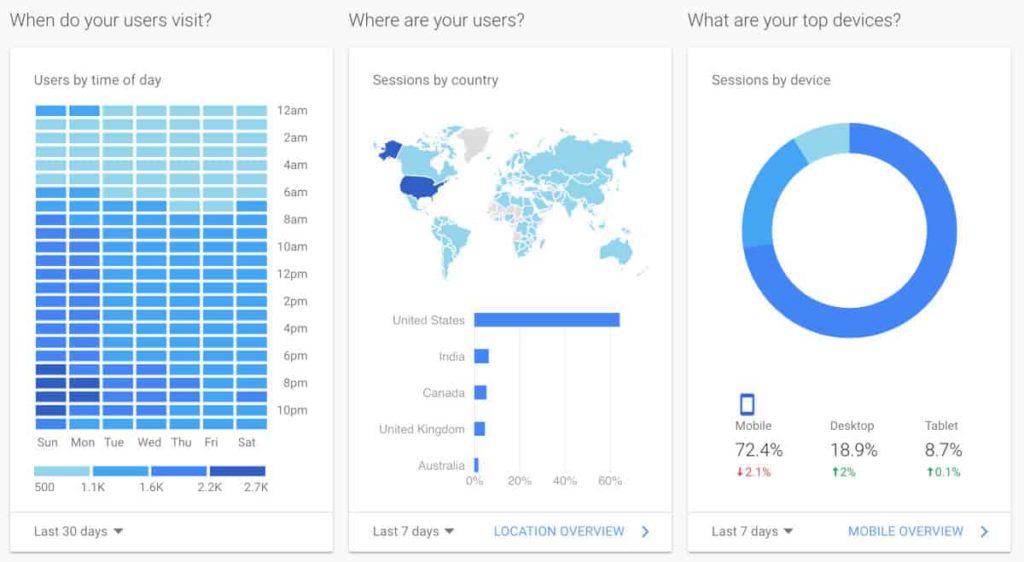
Next, let’s talk about how to get traffic to your blog.
Content and SEO Optimization
We’ll talk about SEO first because it’s one of the most important traffic sources for bloggers.
SEO, or search engine optimization, is the practice of optimizing website content and structure to increase its visibility in search engine results, resulting in more organic traffic. It involves a variety of techniques such as using the right keywords, optimizing page titles and descriptions, linking structure, headings, and more.
What if I don’t like writing?
Written content, or blog articles, are what we think of first when promoting a blog and they are very important. If blog writing isn’t really your thing or you don’t think you have good writing skills, you can always hire a freelancer, a ghostwriter, or use AI tools to help you write.
You also don’t have to write a lot of content, but you should write at least 10-15 articles on your most important blog topics so that your blog looks more established and people have something to read when they check out your website.
Google SEO traffic is generally king when it comes to blog traffic, but even if you don’t actively seek it out, it’s still important to cover the essentials for gradual growth. You should at least do some keyword research and implement basic SEO strategies, as well as regularly update your entire blog and optimize your content.
On-Page SEO
Let’s start with the fundamentals of SEO and the easiest to set up when you are just getting started.
On-page SEO involves optimizing the various elements of your individual posts, such as your post titles, meta descriptions, headings, links, keywords, alt text, and more.
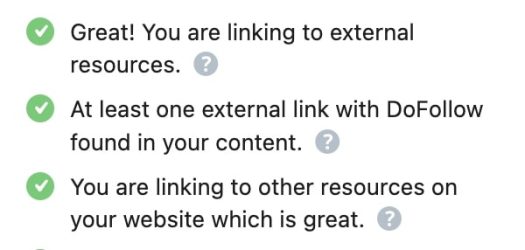
Using an SEO plugin like RankMath, as we mentioned earlier, will help you to make sure that you have these basics covered:
- Keywords: Adding relevant keywords to your content helps Google and other search engines to see what your content is about and to connect users who are searching for those specific keywords.
- Headings: Using the right headings can help users navigate through your content and helps search engines see what the important key points of your article are.
- User Experience: Adding appropriate headings, links, and the right structure will help to create a better user experience, which is also important to Google.
Overall, on-page SEO optimizes the key elements of your blog posts to help search engine algorithms better understand the purpose of your content and how it should be ranked compared to other websites with similar content.
SEO Tools
If you want to focus heavily on getting your content to rank, you will need to utilize some SEO tools to help you optimize your posts further.
SEO tools typically offer features such as keyword research, competition analysis, on-page optimization checks, backlink tracking, and more.
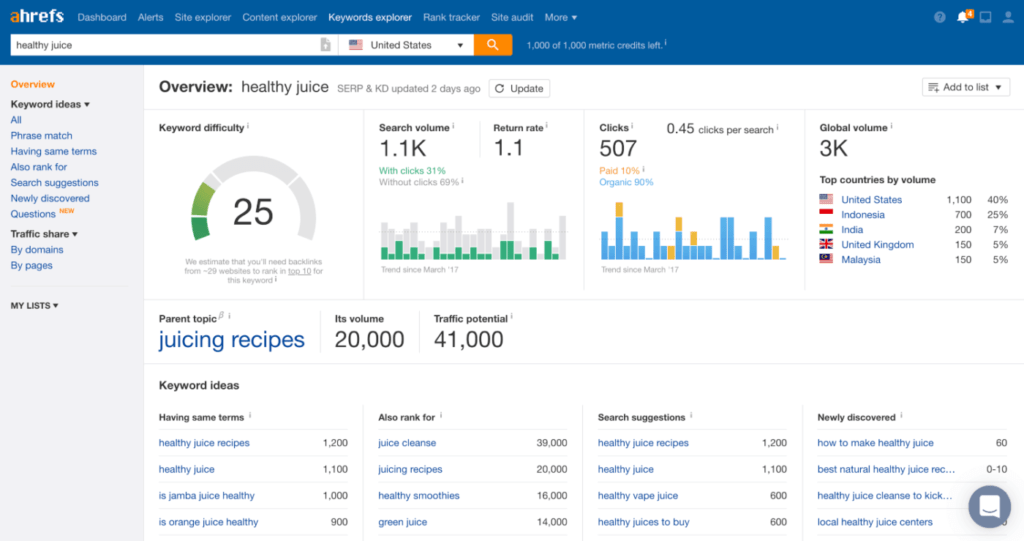
They can also help you to identify opportunities to improve organic rankings and show you what competitors who are ranking are doing differently with their own blogs.
Some SEO tools track rankings to monitor how your content ranks for specific keywords compared to competitors and offer comprehensive reports on impressions, clicks, and rankings of each page.
Make sure to also utilize Google Search Console to identify other areas of improvement on your site.
Recommended SEO Tools
Surfer SEO is one of our favorite tools for keyword analysis in your content. It shows you detailed information on what keywords you should include in your content compared to the top-ranking content in search results.
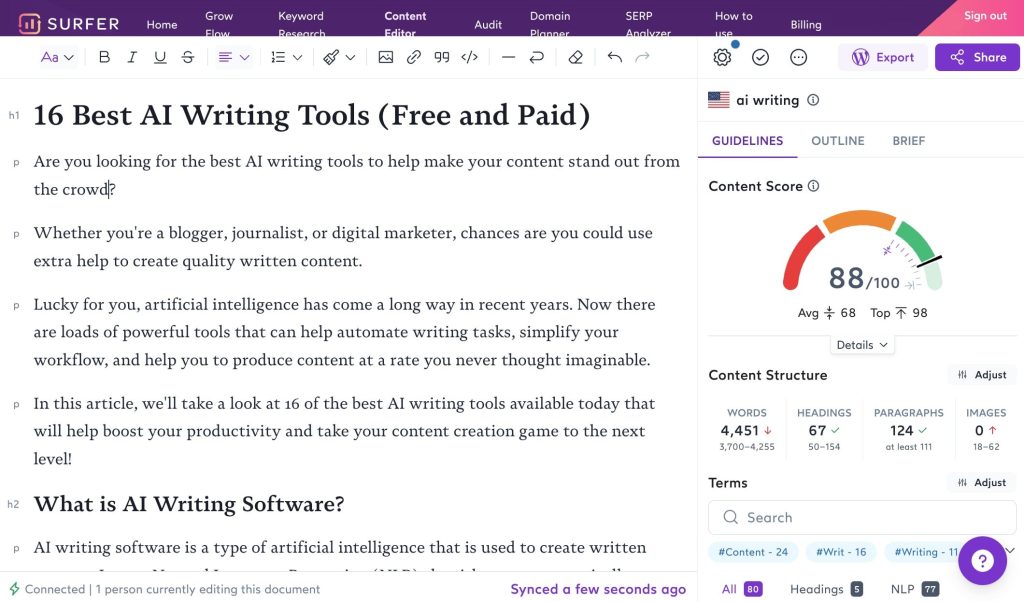
Our other favorite SEO tools include Ahrefs and SEMrush.
SEO tools can be expensive but they are necessary if you want to create a solid SEO strategy for your blog. Without them, you’re flying blind and I can guarantee you that the top-ranking websites on Google are using them.
Guest Blogging and Outreach
Guest blogging is another effective way for bloggers to gain additional traffic and exposure for their blogs. By writing guest posts for other blogs, you can reach a wider audience while also building relationships with other bloggers in the same niche.
Guest blogging provides an opportunity to write content that will be seen by more people and can help attract new readers who may not have otherwise found your own blog.
Perhaps the biggest benefit of guest posting is that it can also help improve your own SEO rankings by providing more backlinks from higher-ranking blogs.
It will also help you build credibility and establish yourself as an expert in your field.
In order to find guest post opportunities, you generally need to do a lot of outreach to other bloggers and websites. This involves finding websites that offer guest posts, contacting the websites to pitch your guest posts, and then following up once you land the gig.
Building relationships through outreach and guest blogging will also help you identify other opportunities for content collaborations or cross-promotions of products.
Never underestimate the power of networking within the blogging community. It has provided us with invaluable expansion, exposure, and sales over the years.
Tips for Building a Guest Posting Strategy
- Identify the most important content that you want to link in your guest posts to give these posts the maximum “link juice” for SEO.
- Identify guest posting opportunities by using Google search, SEO tools, and checking bloggers’ websites for their policies on guest posting.
- Come up with a great pitch and remember to focus on what’s in it for them.
- Write very high-quality content on your own blog and in your guest posts to maximize your reach and potential for new opportunities.
- Track your results using SEO tools to make sure your strategy overall is effective.
Social Media Marketing
Social media marketing is what you are probably the most familiar with when it comes to promoting your blog.
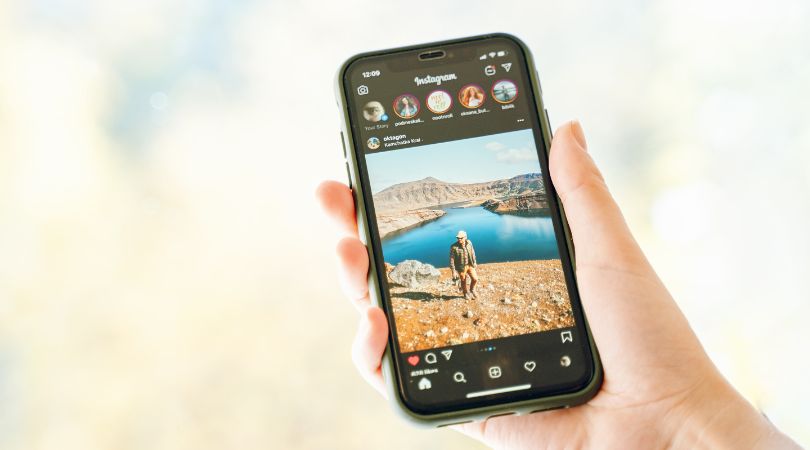
When it comes to social media and content marketing, it’s important to create a targeted approach to make sure that your content reaches the right people with the right intent.
Simply put, content marketing involves creating content that appeals to your target audience and sharing it through different channels, such as email and social media.
With the right content strategy, you can foster relationships with your audience and potential customers while growing your brand recognition.
The best approach to social media is usually to choose a couple of platforms to focus more of your time and attention on, rather than trying to post everywhere all the time. That being said, it still probably makes sense to at least set up social accounts on the most popular platforms so that you can make sure to secure your username.
In the very least, consider setting up a social media account for:
- YouTube
- TikTok
Follow the instructions for each platform, set your username, add a photo, and add an interesting bio to your profile.

Pinterest
Another platform that is great for written content is Pinterest.
Pinterest, like Google, is a social network with a core search function, but it also has a visual element that is used as a “discovery” tool.
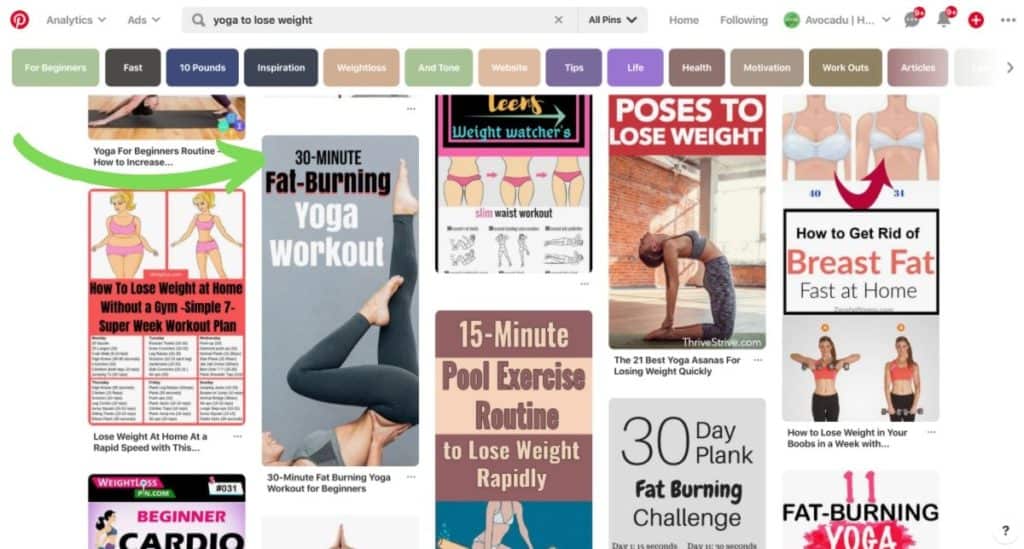
When you share content on Pinterest, you can create “pins” or images to advertise your new blog post.
Consider creating Instagram-style stories and videos on Pinterest to boost brand awareness and engagement.
While Pinterest has less traffic than Google, it is also less competitive, making it an excellent platform for new bloggers to get started building an audience.
Tips to Drive More Traffic With Pinterest
- Use idea pins to increase your brand recognition with your audience. They usually have a higher reach.
- Use a scheduling tool like Tailwind to stay organized, make sure that you’re pinning at the right time, and utilize features like their ghostwriting AI tool.
- Collaborate with other Pinterest users by joining group boards of other blogs in your niche and using Tailiwnd communities to increase engagement.
- Use best SEO practices on Pinterest and include relevant keywords in content, pin titles, descriptions, and other areas of your profile.
- Leverage the reach of promoted pins if you can. It can be cheaper and less competitive than ads on other, more popular platforms like Facebook and Instagram.
Podcasting
The best platform for voice content is, of course, podcasting.
Podcasts are affordable and easy to start and they provide a completely different and unique platform for you to reach a new audience on.
All you need to start a podcast is a good hosting company (our favorite is BuzzSprout) and a decent microphone, which you can get affordably on Amazon.
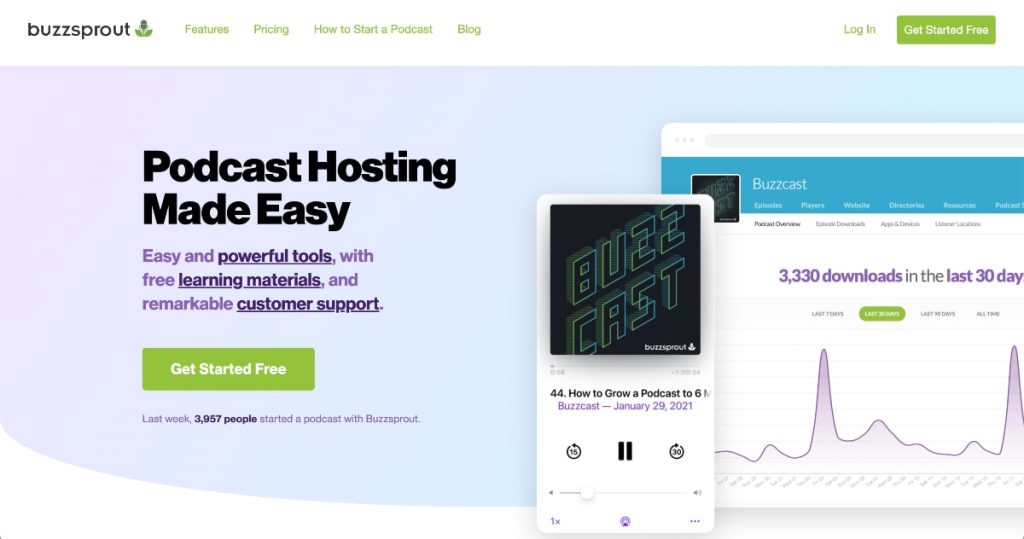
One of the easiest ways to get started with podcasting is to discuss the same topics that you write about in your blog posts. It’s a great way to repurpose content for a new audience.
You can also embed your podcast episodes into your blog posts to increase their reach or film your podcast sessions and put them on YouTube.
Inviting other successful bloggers to be a guest on your podcast is a great way to network and make connections within your niche.
This type of content is just having a natural conversation with others on topics that you care about, so it makes for a really easy and efficient way to create more content.
Make sure to start with some basic audio editing software to remove mistakes and awkward pauses from your recordings.
Tips to Increase Your Reach With a Podcast
- Invest in a high-quality microphone to make sure the audio on your podcast sounds great.
- Create transcripts for your podcast episodes for better accessibility for users and for people who don’t like listening to podcasts.
- Include show notes for every episode with highlights and relevant product or affiliate links.
- Monetize your podcast with ads, sponsorships, or Patreon to supplement your income.
- Survey your audience to see what kind of content they want most from you so that you can continue to offer the best content possible.
- Include a call-to-action at the end of every episode to drive listeners to your email list or paid products.
- Invite guests on your show and provide them with a link to the episode once it’s published so that they can show it with their audience and increase your podcast’s reach.
YouTube
YouTube has over 2 billion users, making it the second-largest search engine in the world and also a really great market for a potential audience.
With YouTube, you can present your content in an engaging and dynamic format, providing viewers with an alternate way of experiencing your content and your personality.
Additionally, embedding your YouTube videos into your blog posts can significantly improve your website’s SEO performance by increasing relevancy and reading time on your pages.
The good news is that anyone can be successful with YouTube and you don’t need much to get started aside from some good video editing software, but there are also tons of free options.
Your YouTube videos should always:
- provide as much value to your audience as possible,
- be optimized for search and utilize important keywords,
- and include a clear call-to-action at the end to subscribe, sign up for an email list, or buy a product.
Tips to Drive More Traffic With YouTube
- Make sure that every video has a clear purpose. Start with a structured outline of what you want to cover.
- Add chapters/timestamps to make your content easy to navigate.
- Watch some basic tutorials on how to add simple graphics and text to your videos.
- Make the most use of the end-screen options and annotations to keep people clicking on your links, next videos, etc.
- Review your analytics often to see where people are dropping off and how you can improve your content.
- Experiment with different thumbnails and update them when necessary to increase click-throughs to your videos.
- Be real and relatable in your videos. This is what builds trust and keeps people coming back for more.
Instagram and TikTok
Instagram and TikTok each have over 1 billion active users, which means that either or both of these platforms have a huge market of potential customers.
Both of these platforms feature a lot of video content and many influencers recycle content to share on both platforms to maximize their reach.
Instagram differs somewhat in that you can also share static images, although video content such as reels and stories are generally more popular and get more exposure.
TikTok is used more for quick, fun videos that are often 15 seconds or less, while Instagram is often a little more personal through its stories feature.
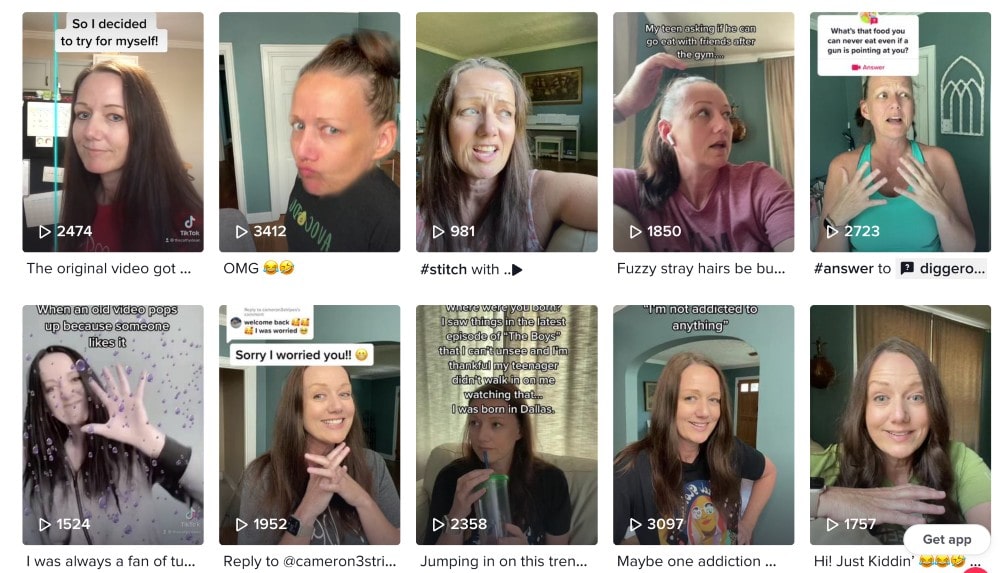
The audiences on these platforms also differ slightly in that TikTok is typically used by a younger audience (Gen Z) and Instagram is more popular with Millenials.
If you’re interested in growing your blog with either of these traffic sources, you can use these guides to learn more:
Influencer marketing isn’t for everyone and although you don’t have to be an influencer to be successful with these platforms, the vast majority of bloggers are.
Paid Marketing and Ads
This method isn’t necessarily something most people think about when they start a blog, but paid ads can be a great way to scale your blog traffic.
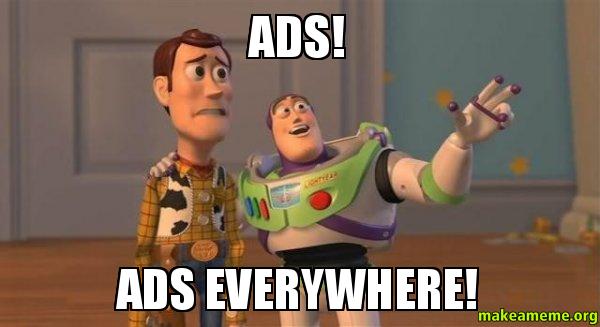
Ads help increase visibility and engagement with potential customers who may not have otherwise discovered your content organically.
Paid marketing also offers a variety of other benefits such as increased brand recognition, better conversion rates, higher return on investment (ROI), improved customer loyalty, and much more.
You can use analytics tools such as Google Analytics and Google Search Console to track performance metrics like CTRs and ROI so that you can adjust your strategies accordingly.
When done correctly with smart targeting tactics and well-crafted ad copy, it can be a great way to scale up traffic in a relatively short amount of time, but it’s generally a step you want to take after monetizing your blog.
Social Media Advertising
Everyone and their grandmother is familiar with this type of advertising because we see it so often now on Instagram, YouTube, etc.
With social media advertising, you can target specific demographics based on factors such as age, gender, interests, location, etc., and create highly targeted campaigns that are tailored to the content of your blog.
This type of personalization can increase click-through rates (CTR) and overall engagement with your content.
Search Advertising
Search advertising is another great way to get more eyes on your blog. In addition to using SEO techniques, you can also set up paid campaigns on search engines such as Google Ads or Bing Ads.
This allows you to bid for keywords relevant to your blog topic so that when people search for them, your ad will show up at the top of the results page.
Tips to Get the Most Out of Paid Ads
- Create multiple images, videos, and ad copy to see what content gets the best click-through-rates.
- Watch as many videos and tutorials to understand how ads work or consider hiring help.
- Selling with an email list or webinars often works better for high-priced products.
- Make sure your tracking is set up properly so you can see where people are dropping off in your funnel.
- Pay attention to ads from others and competitors in your niche to get ideas for your own ads.
Email Marketing
One of the best ways to advertise your blog is through email marketing because it enables you to target your audience with highly personalized content and build relationships over time.
It allows bloggers to speak directly and personally through tailored messages that encourage subscribers to take action, such as watching a video or buying a product.
You can use your email list to share new content, get subscribers on other platforms, offer discounts, collaborate with other bloggers, and more.
It can also be a very effective marketing and sales tool for the products that you sell on your blog.
This makes it easier to convert and retain customers who are already interested in your blog’s content.
You can also track performance metrics like open rates and click-throughs to measure the success of your emails and optimize future campaigns accordingly.
The key is to create targeted campaigns that strike a balance between delivering value and promoting products and services, which help bloggers can create meaningful relationships with their readers while growing their business in the process.
Overall, email marketing is an essential tool for any blogger looking to grow traffic and generate sales from their blog posts.
Start an Email List
After you finish writing your first few blog posts and you are ready to start promoting your content, you should create an email list.
The very first step is to create a form for your subscribers to opt-in.
Most people don’t want to sign up for another newsletter, so it’s important to offer a freebie, also called a lead magnet, to incentivize readers to sign up for your email list.
This can be as simple as a free guide or checklist or as complex as a free mini-course like our free start a blog challenge:
The best free tool for creating this freebie is Canva. They have templates for every case you can think of and are great for creating most free guides or downloads.
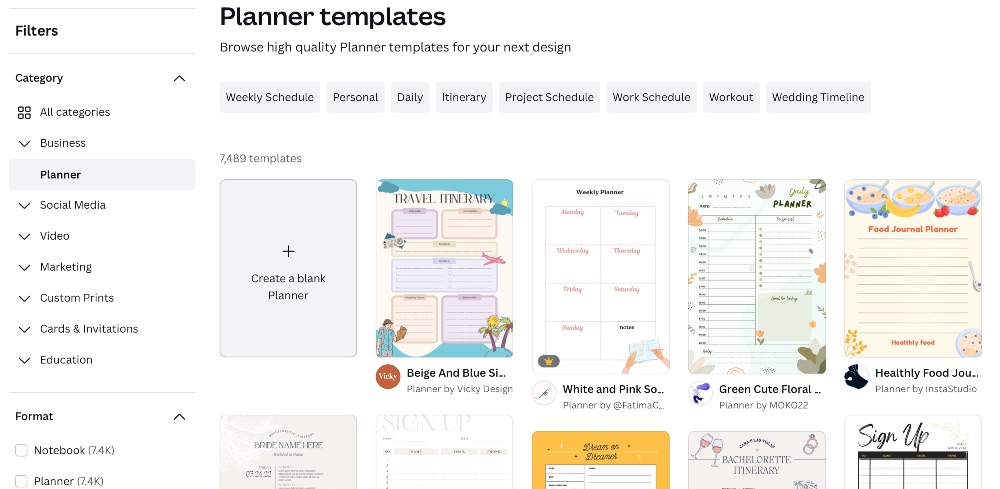
You’ve probably seen these in the form of discounts on many eCommerce sites that sell products.
Just make sure that your free offer is closely tied to the topic of your blog and even any potential products to make sure that you are attracting the right people to sign up.
You need an email marketing service to manage your forms, landing pages, email contacts, email campaigns, and more.
We recommend starting out with ConvertKit’s free plan because they have a ton of different forms and landing pages that you can choose from to get started.
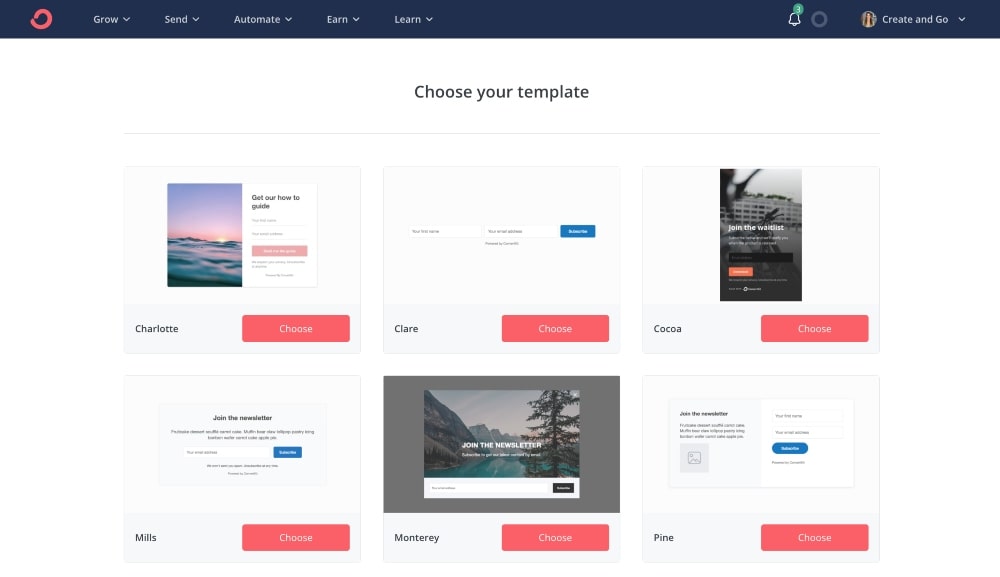
Make sure to write a good welcome email that introduces yourself and your business and that also provides them with the freebie that they signed up for.
Send Content to Your Audience
There are two main types of email content that you can send to your audience: broadcasts and campaigns.
Automated campaigns, also called email funnels, are emails that are pre-written and set to automatically be sent out to subscribers on specified days.
For example, a welcome sequence is a series of emails that are sent out on subsequent days after a new subscriber signs up.
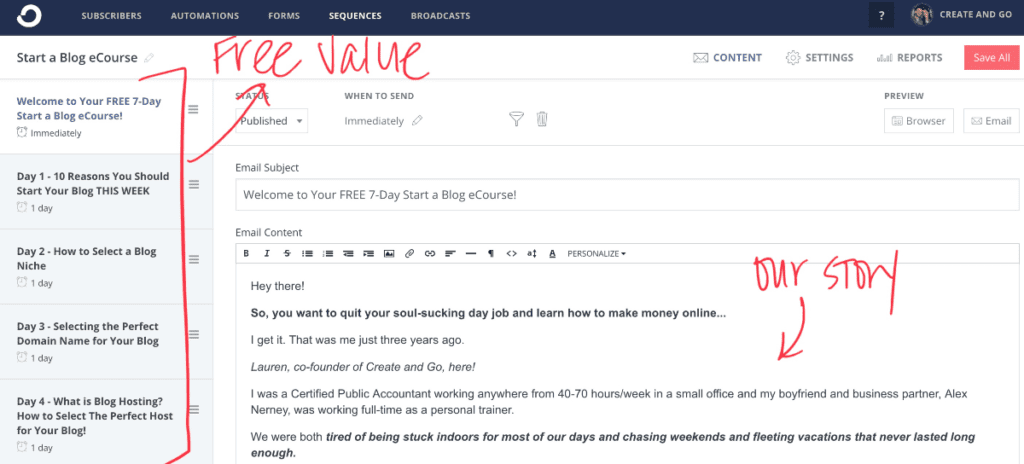
Broadcasts are one-time emails that are sent out to subscribers, but they can also be written ahead of time and scheduled in advance.
For example, if you want to share a new YouTube video or podcast episode with your audience, you would write a new broadcast to share that content with your audience.
When writing emails to your audience, make sure to always focus on delivering value to them first before asking for a sale.
Create an Email Sales Funnel
Once you have a product to sell, you can create an email sales funnel, also called a sales sequence, for your product.
An email sales sequence, like a welcome sequence, is a series of automated emails that highlight a product sale – often with a discount or special offer to incentivize purchases.
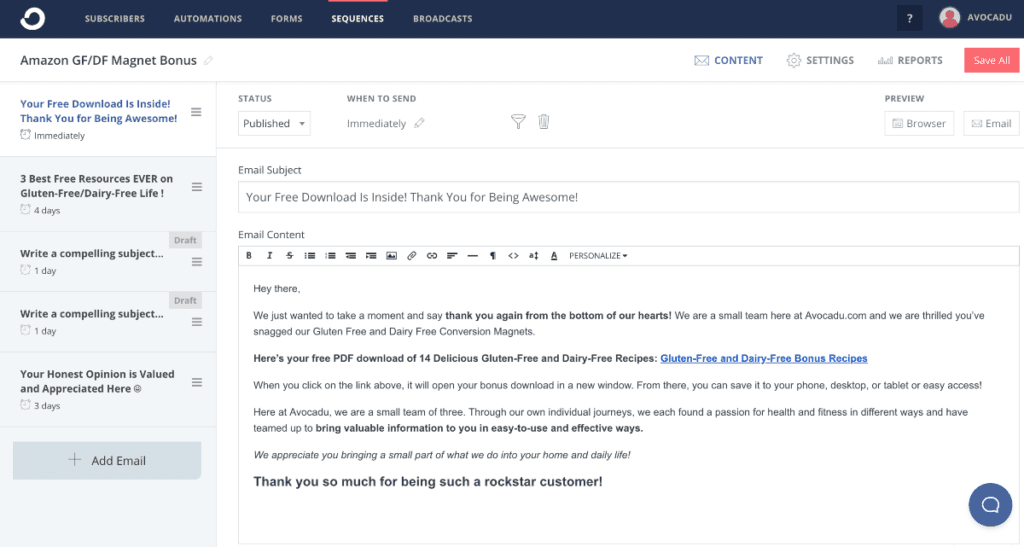
An email sales funnel is one of the best ways to sell higher-priced products and start automating the sales in your business because you can schedule these campaigns to go out automatically when new subscribers sign up.
These email sequences usually last around 5-7 days and often provide a lot of value in the first few days before heavily promoting any sale.
Tips to Grow Your Email List
- Add your email opt-in to the menu of your website and the beginning of your content to give it maximum visibility.
- Test out different opt-in offers, images, forms, and landing pages to see what gets the highest conversion rates.
- Advertise your opt-in on your blog and in other social media channels and platforms.
- Check the analytics on your opt-ins and emails, including conversion rates, open rates, and click-through rates.
6 Ways to Start Earning Money with Your Blog
We’ve finally made it to the most exciting part of our how to start a blog tutorial. I think actually learning how to start a blog is the most important part, but I know that most of you are the most excited to learn how to make money with a new blog.
There are a variety of ways that you can make money with a blog and each method has its advantages and disadvantages.
Not surprisingly, the easiest ways to make money are usually the least fruitful but the best strategy is to diversify with multiple methods of monetization.
The revenue on your blog will ebb and flow and change as your blow grows, so having multiple revenue streams in place will help you earn more and create a buffer against any unexpected downturns.
Traffic platforms can change, your audience’s preferences can change, and new competitors can all change the state of the market and your income.
1. Ad Networks
Ad networks are one of the most popular ways for bloggers to make money and also the easiest and most passive way to make money with a blog.
An ad network is a company that serves up ads on your website or blog and pays you based on ad clicks.
You can choose between a wide variety of ad formats to display on your blog, including display ads, text ads, video ads, and mobile ads.
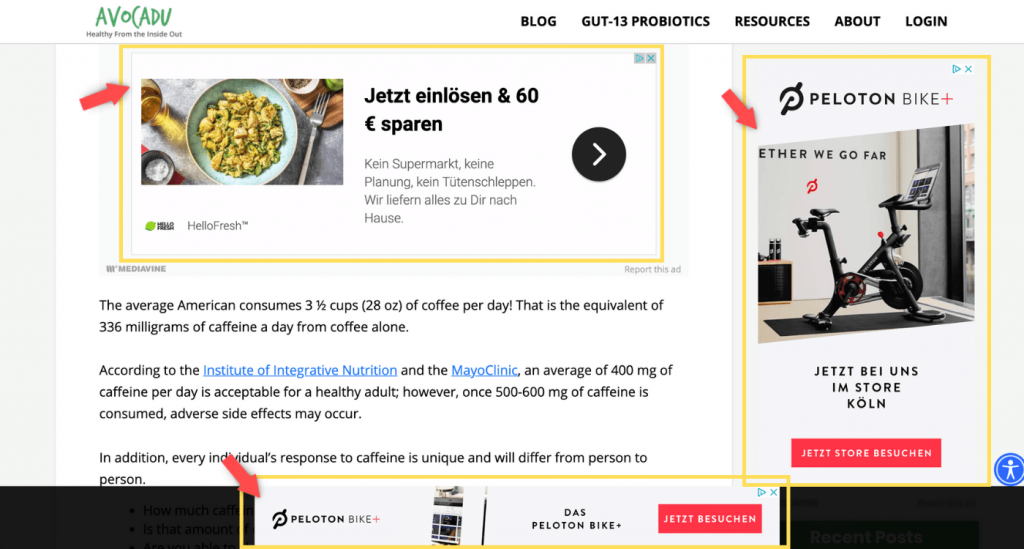
Ad networks also sometimes allow bloggers to choose the types of advertisers want to work with, so that they can ensure that the ads being served fit well with their audience’s interests.
The best part about ads is that they allow you to monetize a large number of visitors who probably won’t ever buy your products anyway.
The downsides are that they look tacky, can harm the user experience, and require a lot of traffic to make significant income from.
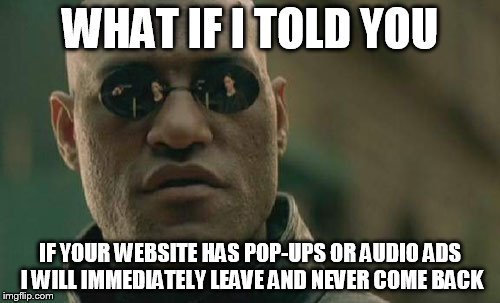
Tips for Increasing Ad Revenue
- Create high-quality content that attracts readers as well as relevant advertisers.
- Find a good balance between ad formats that earn more but don’t harm the user experience too much.
- Focus on getting your traffic up higher first because earning less than $2/day with Google Adsense isn’t really worth it.
- Consider waiting until you have at least 10,000 website visits per month and partner with a premium ad network like Ezoic or Mediavine, which has even higher requirements.
- Don’t put ads on all of your pages. Leave ads off for any pages that earn you more money from courses, affiliate products, or other methods.
- Google Adsense is where most bloggers start because there are no minimum traffic requirements, but they provide little assistance with ad setup and have the lowest payout.
2. Offer Freelance Services
Freelancing is one of the best ways to start making money in the blogging world while you are trying to grow and monetize your new blog in other ways.
It can take time to start making real money from your blog and freelancing offers you a way to earn some side income as well as build relationships with other bloggers.
In the case of freelance writing, you can often have your name published with the content that you write and potentially even have a link back to your blog.
This can build more exposure to your blog over time.
Other common freelance services that bloggers provide include graphic design, web development, social media management, and more.
The most popular platforms to look for or offer freelance work are Fiverr and Upwork:
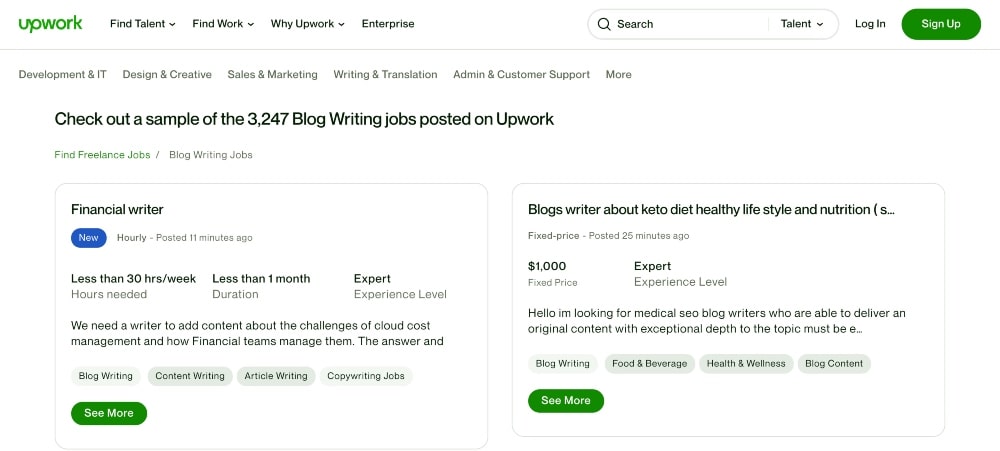
The cool thing about freelancing is that it allows you to “learn on the job” and gain more experience from working with other bloggers that you can use in your own business.
It’s a great way to grow your skillset while also diversifying your income.
When it comes to freelancing services, you can either charge per project or on an hourly basis.
You may also want to consider setting up a subscription-style service where clients pay a recurring fee for your services. This allows you to establish long-term relationships with clients and increase revenue over time.
Tips for Offering Freelance Services
- Create a portfolio of your services and showcase it to potential clients.
- Promote your services on relevant platforms such as job boards, freelance websites, and social media channels.
- Offer discounts or free trial periods to new customers in order to build trust with them.
- Set realistic expectations with clients regarding timelines and pricing.
- Create a freelance contract to outline the expectations for the work, timelines, payment, and more.
- Diversify with other blogging jobs to increase your income.
3. Affiliate Marketing
Affiliate marketing is one of the most effective ways bloggers make money and is how we earn a large portion of our blogging income.
When you sign up for an affiliate program for a brand or company, you can get an affiliate link for their product to share with your audience.
Different affiliate programs have different commissions and earnings potential.
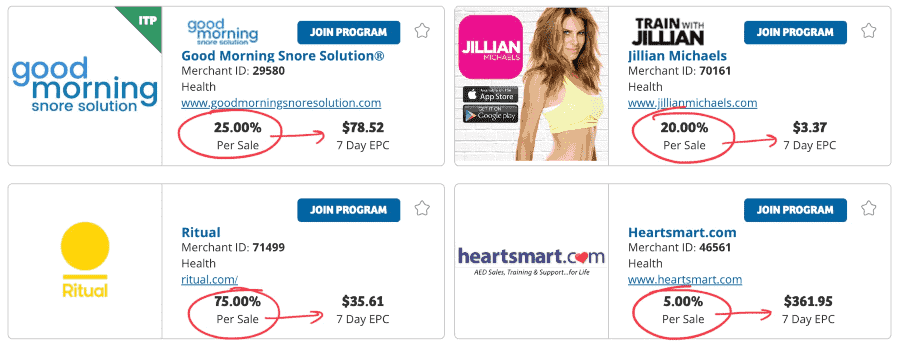
When someone clicks on that affiliate link and makes a purchase, you receive a commission on that purchase.
Selling affiliate products is a really great way for bloggers to earn a significant income without having to take the time to create their own products.
It can be very passive when you set up your affiliate marketing strategy the right way.
The best way to make money with affiliate marketing is to focus on products or services that are very relevant to your audience and to create blog content around those products and services.
Always make sure to educate and provide value in addition to encouraging readers to click your affiliate links.
You can generally make the most money with affiliate marketing through strategic partnerships with brands or companies.
Some of our biggest strategic partnerships have led to customer discounts, customized landing pages, joint webinars, and other promotions that have helped us increase our affiliate sales.
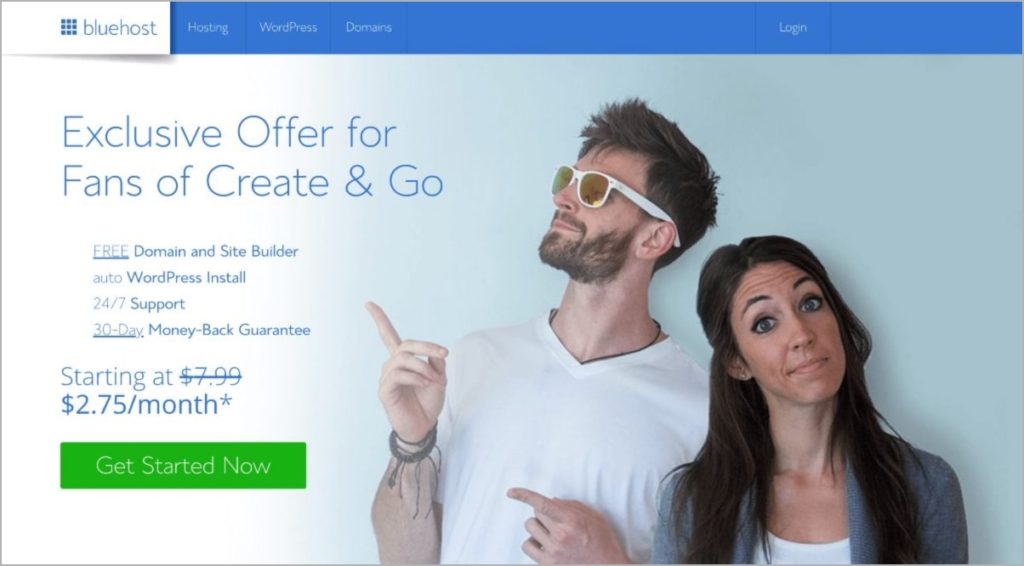
Tips to Earn More With Affiliate Marketing
- Focus on quality over quantity. It’s better to be strategic and create more content around your most important partnerships than to throw up affiliate links everywhere and hope they work.
- Build relationships with your most important partners over time to get additional perks, incentives, and promotions to pass on to your audience.
- Higher-priced affiliate products can be harder to sell but can also provide you with a lot more income.
- Be transparent with your audience and always disclose your affiliate relationships and why you recommend certain products.
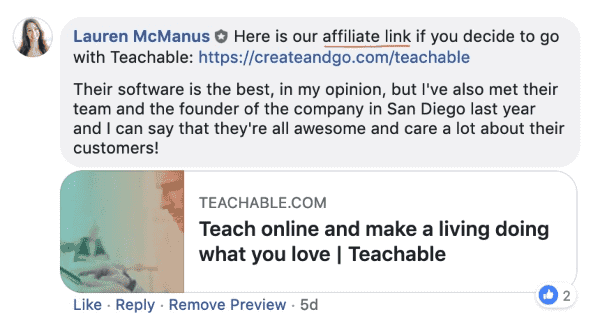
- Pair affiliate products with your own course or other products to earn more from your most valuable customers.
4. Sell Online Courses
Selling online courses is a great way for bloggers to make money and is the method that has earned us the most money in our blogging career.
Courses offer you a way to expand upon what you share and teach on your blog and charge for access to that knowledge.
They take a lot more time to create and set up, but you can usually charge a much higher price for courses.
We sell our signature course, Six-Figure Blog Builder, on Kajabi:
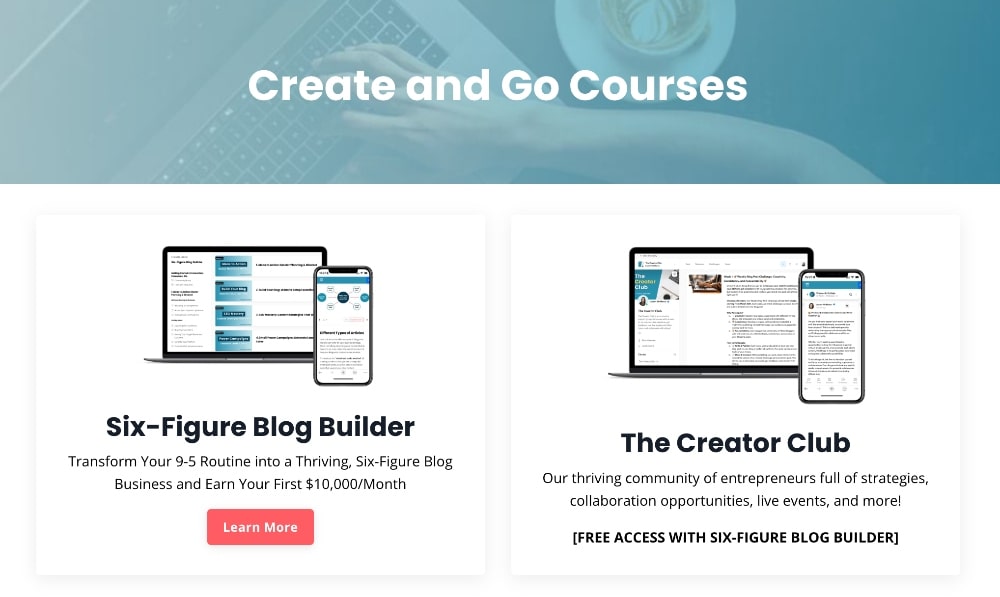
When it comes to choosing a platform to sell your courses, you have two main options:
- Sell your courses on your own with a platform like Teachable or Kajabi (what we use).
- Sell your courses on a marketplace platform like Skillshare or Udemy that drives traffic for you.
Selling your courses on your own generally provides the potential for more income because you can charge higher prices and also allows you to have more flexibility to create your own affiliate program.
Partnerships are also a great way for bloggers to increase the reach of their online courses.
Tips for Selling Online Courses
- Don’t worry too much about perfection. It’s more about the quality of the information that you’re sharing.
- Update your courses often and when necessary and share those updates with your audience.
- Offer discounts to your audience to incentivize purchases.
- Create an email sales funnel to help sell your online courses.
- Add affiliate links to diversify the income that you receive from your courses.
5. Sponsored Posts
Sponsored posts are another great way for bloggers to make money blogging.
A sponsored post is a post that a company or brand pays you to write, usually about a particular product or service, and publish on your blog and share it with your audience.
Sponsored posts can take many forms, such as written blog posts, video content, or social media campaigns.
The larger and more engaged your audience, the more you will usually get paid for sponsored posts.
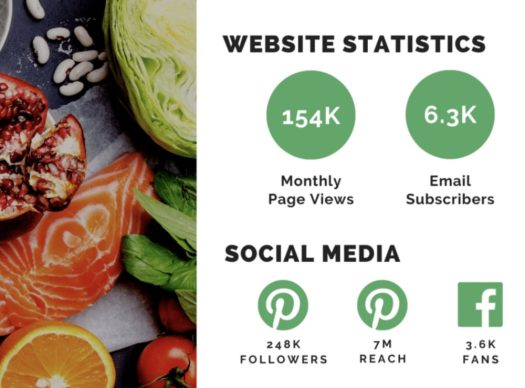
Sponsored posts are great for bloggers for a few reasons:
- You get paid to write posts.
- It provides additional, usually relevant, content to share with your audience.
- It provides an opportunity to partner with other brands and companies.
This type of promotion can be more beneficial to the company or brand because it is often a more cost-effective route to reach a specific audience than paying for traditional ads.
Tips for Earning More With Sponsored Posts
- Make sure sponsored content aligns with your audience’s interests.
- Create engaging content that resonates with your audiences so that your sponsors are willing to pay more for better results.
- Make sure that the partnerships align with your own values and that you remain authentic in order to maintain trust with your audience and readership.
- Be transparent about sponsored posts by clearly indicating when something has been paid for.
- Create a dedicated advertising page and link it on the footer of your website so that potential sponsors can easily find the information they need to evaluate a potential partnership.
6. Selling Other Products
In addition to selling courses, there are a lot of other types of products and services that you can sell on a blog.
You can create physical products, digital downloads, subscriptions, memberships, consultation and coaching, and more.
Physical products can include everything from eCommerce sites to selling on Facebook shops to marketplaces like Etsy or Amazon.
Some popular digital downloads include eBooks, templates, and other online programs. Canva is another great resource to help with the design of your products.
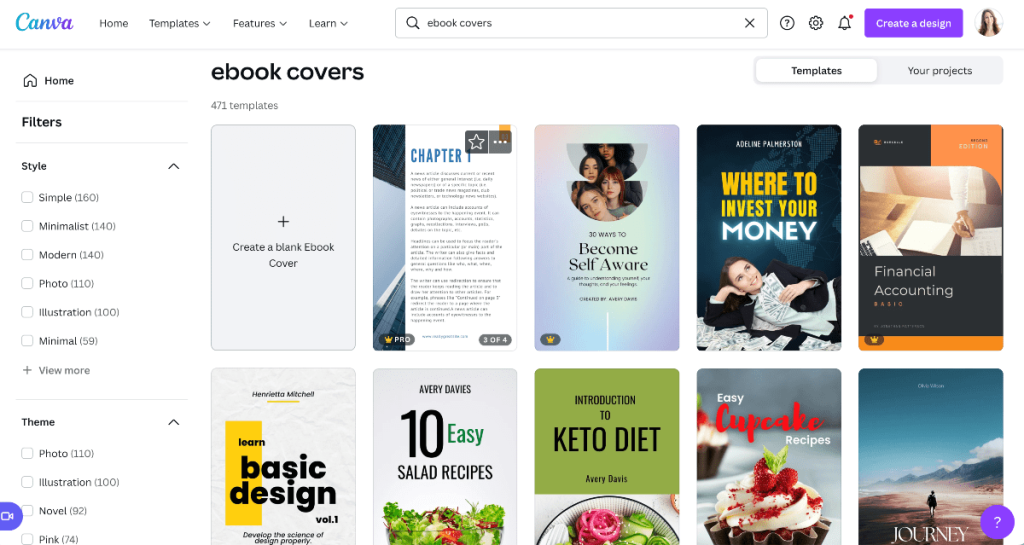
Many bloggers offer consultation or coaching services to their clients at a higher price.
Marketplaces offer the added benefit of a new audience though search on the platform but selling products on your own website provides more flexibility with pricing and marketing.
Tips for Selling Products
- Research what types of products are in demand and create products that meet those needs.
- Make sure your product descriptions and images are clear, detailed, and engaging to capture the attention of potential customers.
- Use SEO optimization techniques to increase the visibility of your products.
- Offer discounts and promotions to incentivize purchases.
- Utilize referral programs or affiliate links to drive more sales.
- Encourage customer reviews and testimonials to increase sales.
- Consider paid advertising to increase your reach.
FAQs About How to Start a Blog
How do bloggers get paid?
Bloggers typically get paid by monetizing their blog in several different ways, including advertising, sponsored posts, affiliate marketing, selling digital or physical products, and offering services like freelancing, web design, coaching, and consulting.
Do beginner bloggers make money?
Beginner bloggers can definitely make money depending on the amount of effort and dedication they put into their blog. With a combination of strategizing, creating engaging content, and careful marketing, beginner bloggers may be able to start earning money from their blogs in as little as just a couple of months.
Do bloggers make much money?
The amount of money bloggers make largely depends on the type of blog they have, the content they create, and how much traffic their blog receives. Many popular bloggers are able to make a significant income through partnering with brands and utilizing various monetization strategies such as advertising revenue, sponsored posts, affiliate marketing, and digital product sales. If you run a personal blog or free blog, you won’t likely make much, if anything.
How do I start a blog for beginners?
Starting a blog for beginners can be a straightforward and rewarding process! First, you’ll need to choose a web hosting plan and your blog’s niche and name. After you install WordPress and select a blog theme and design, you’ll need to write your first blog post and start promoting it to attract readers. Finally, you can monetize your blog through a variety of strategies to start earning money!
Biggest Takeaways for Starting a Blog
Learning how to start a blog can be a daunting project, but it’s also very exciting and that’s what you should focus on.
With the right steps and the right plan, anyone can learn how to start a blog successfully and earn money within even the first few months.
We have had students earn significant money from their blogs in as little as 3 months.
Here are some of the most important lessons learned from this post:
- Create a blog with the right foundation, including your niche, blog name, and web hosting company.
- Install a customizable blog theme on your blog and start learning the ins and outs of your WordPress dashboard.
- Start out with a simple and professional blog design to get started and then focus on what’s most important: your content.
- Install the most important plugins on your blog to make sure your website is optimized for speed, performance, security, accessibility, and more.
- Write at least 5-10 blog posts before you start promoting your content to make sure that you have a wealth of content to share with your audience.
- Consider who your target audience is before you start creating content to make sure that your content resonates with them.
- Decide what kind of content to create and what platforms you plan to share it on. Ideally, you should create at least one form of written blog content and one form of other content such as voice or video content for building deeper connections.
- Decide how you want to make money blogging and remember to diversify with a variety of methods. Selling your own products and affiliate marketing will often generate the highest amounts of revenue for most bloggers.
Successful blogging is all about taking the right steps in the right order and staying focused throughout the process.
Additional Tips on How to Start a Blog Successfully
In addition to “following the plan” to create a blog, here are some other tips from our own blogging journey.
Increase Your Productivity
Becoming a successful blogger is often just about time. Starting any business takes a lot of time and dedication, so anything you can do to devote more time to your blog is helpful.
Carve out time in the morning before you go to work or in the evening before you go to bed. Work weekends if you have to (we certainly did in the beginning).
Stay Focused
When you create a blog, you have to wear a lot of hats and do a lot of jobs at once, especially in the beginning: content production, marketing, making money, customer service, and more. It can be hard to stay focused on what’s important.
Every day, think about the #1 most important task or project that you can tackle that will have the largest impact on your business’s growth.
Focus on that task completely until it’s done.
Hire Help When You Need It
As your blog grows, you will need to hire out help to manage all of the tasks of your business. It’s time to hire help when you start to notice too much stuff falling off of your plate.
If you wait too long, some areas of your profitable blog may suffer. Hiring out admin work or writing work is often where most bloggers start. This will help free up your time to focus on the most important aspects of your business like growing your business and increasing your sales.
Pay Attention to Your Competitors
Your blogging journey will take a lot of twists and turns and it’s important that you continue to grow, evolve, and change with it. You don’t want to find yourself with your head down working when everyone else is moving forward without you.
Identify several other successful bloggers in your niche and pay attention to the blog content that they are sharing and how it changes over time. Continue to test out new strategies and improve existing strategies when necessary.
Stick With the Plan
No matter what, trust yourself in this process. Find people to follow who inspire you. Take courses and never stop learning.
Learning how to start a blog can be challenging but also will be one of the most rewarding things you ever do in your life, in our humble opinion.
With hard work, some quality, value-driven blog content combined, and the right marketing strategy, anyone has the potential to start a profitable blog.
We hope that this step-by-step guide on starting a blog has been helpful! If you have any questions about how to start a blog or run a successful blog, feel free to ask us in the comments below!
